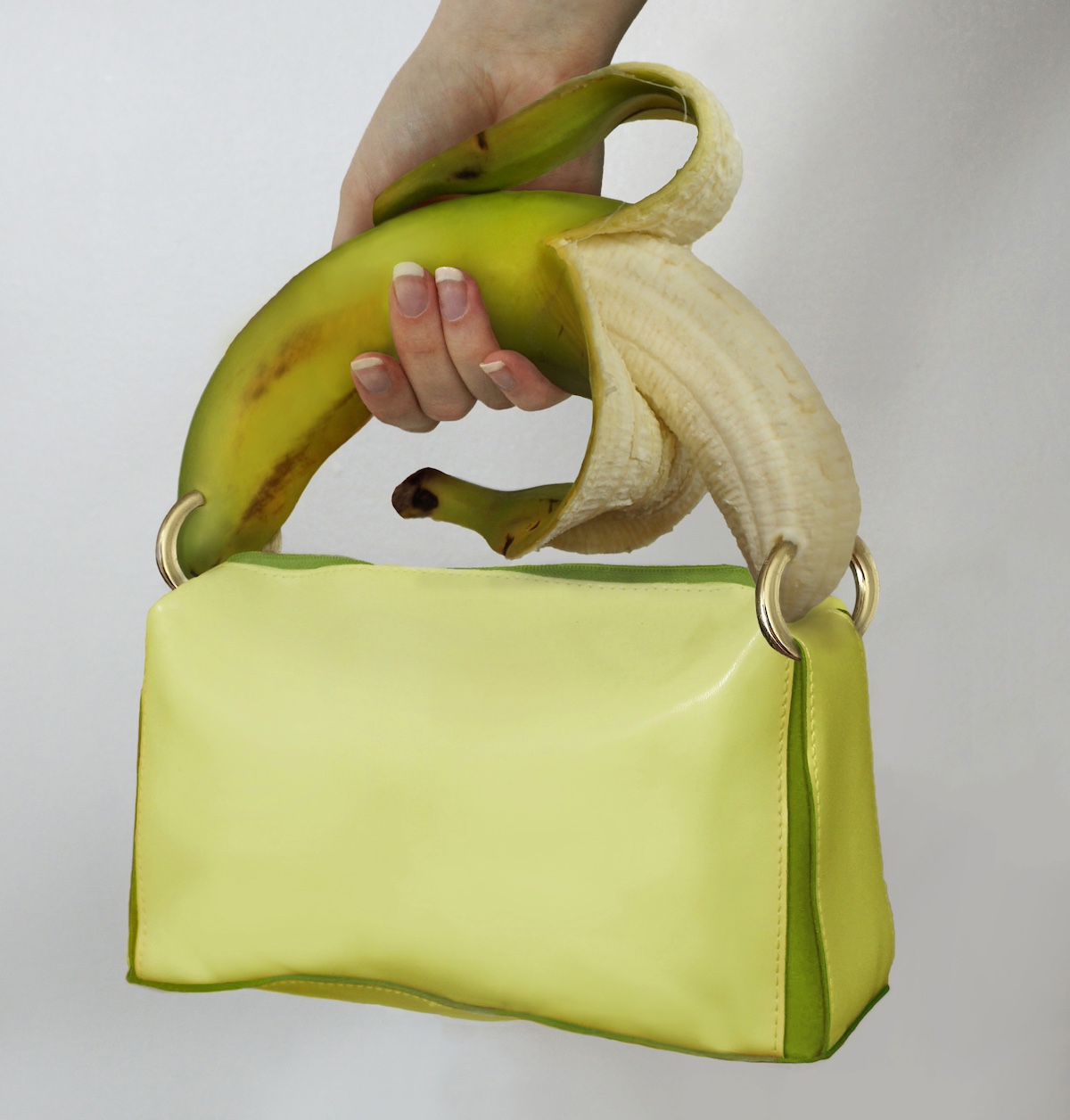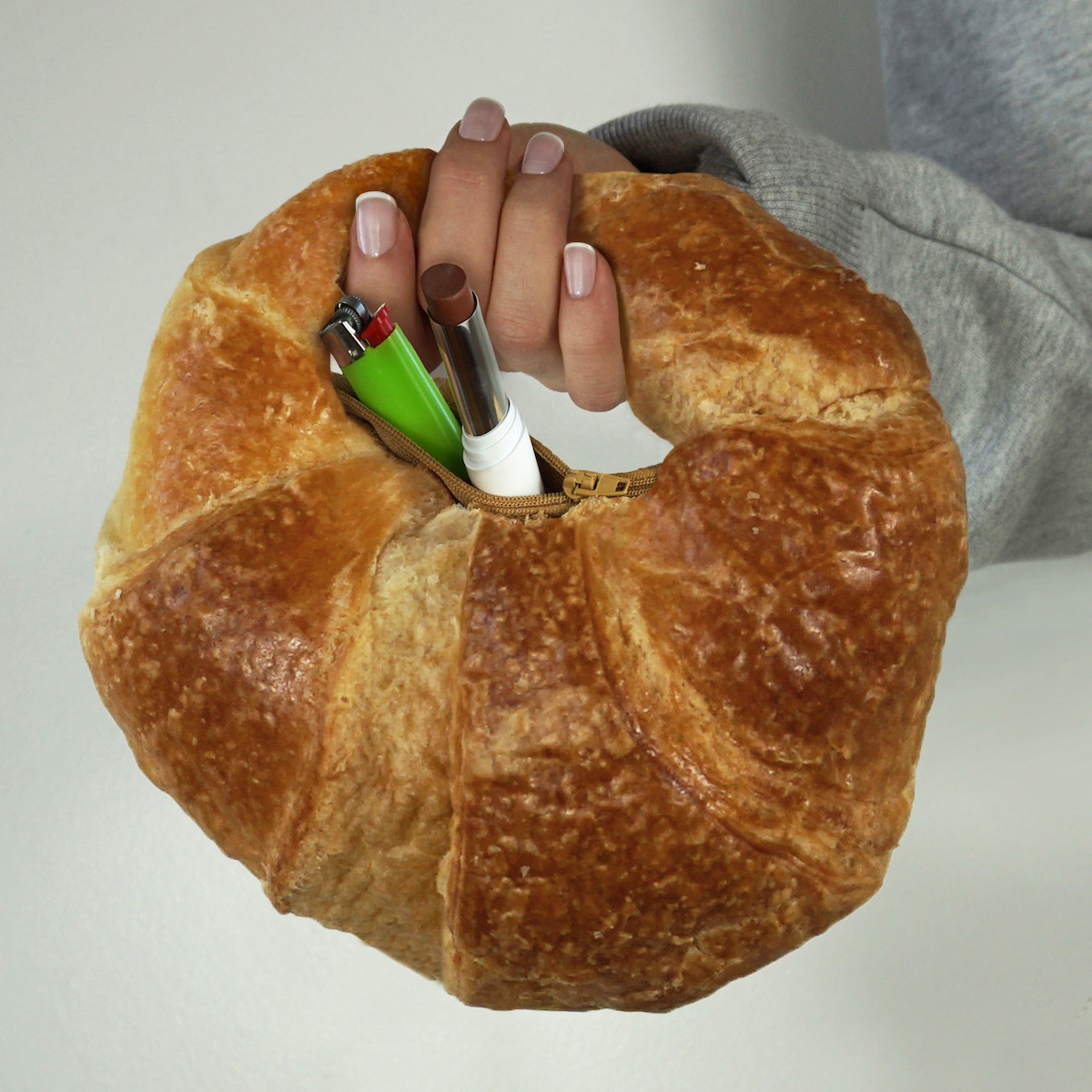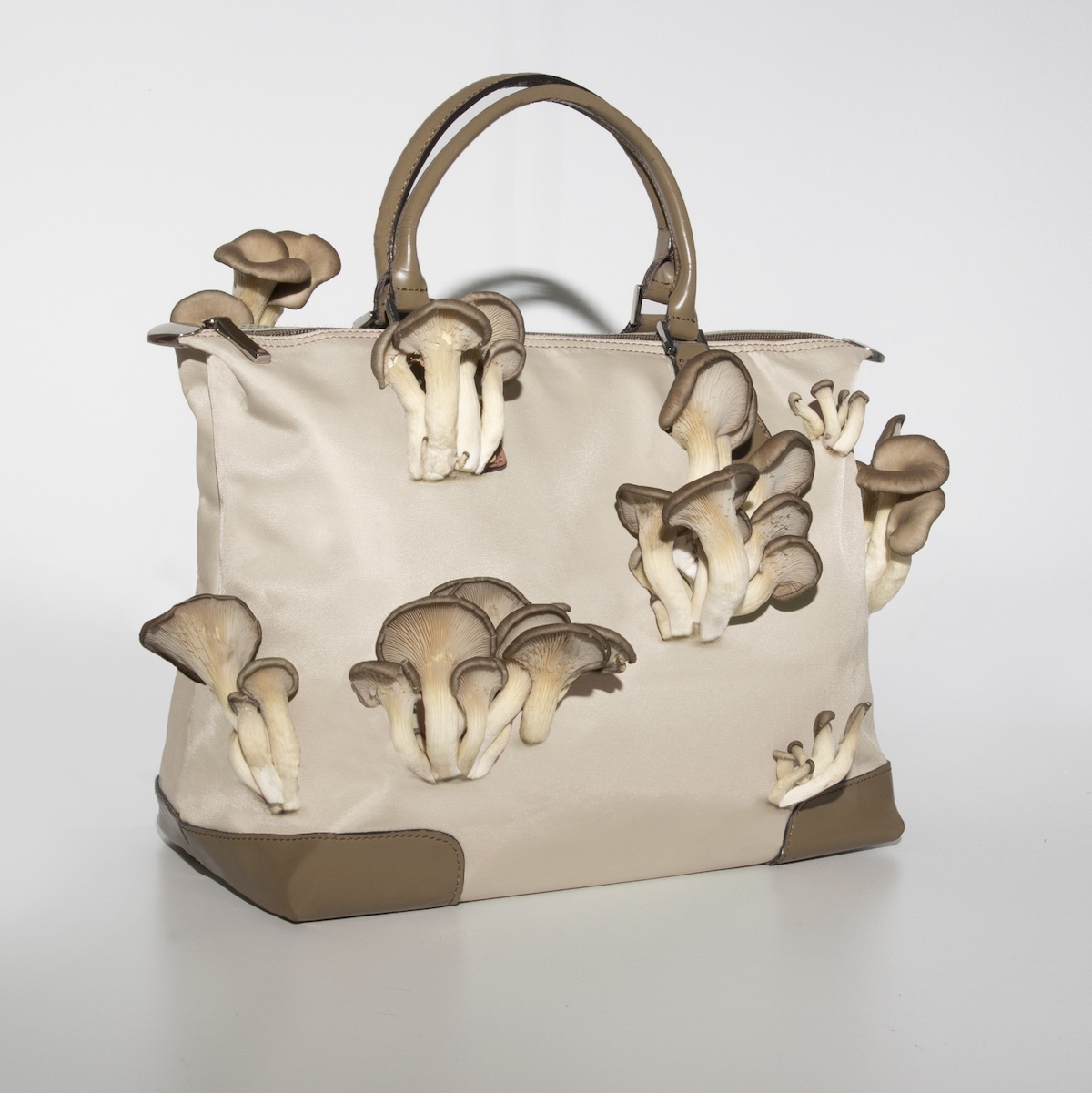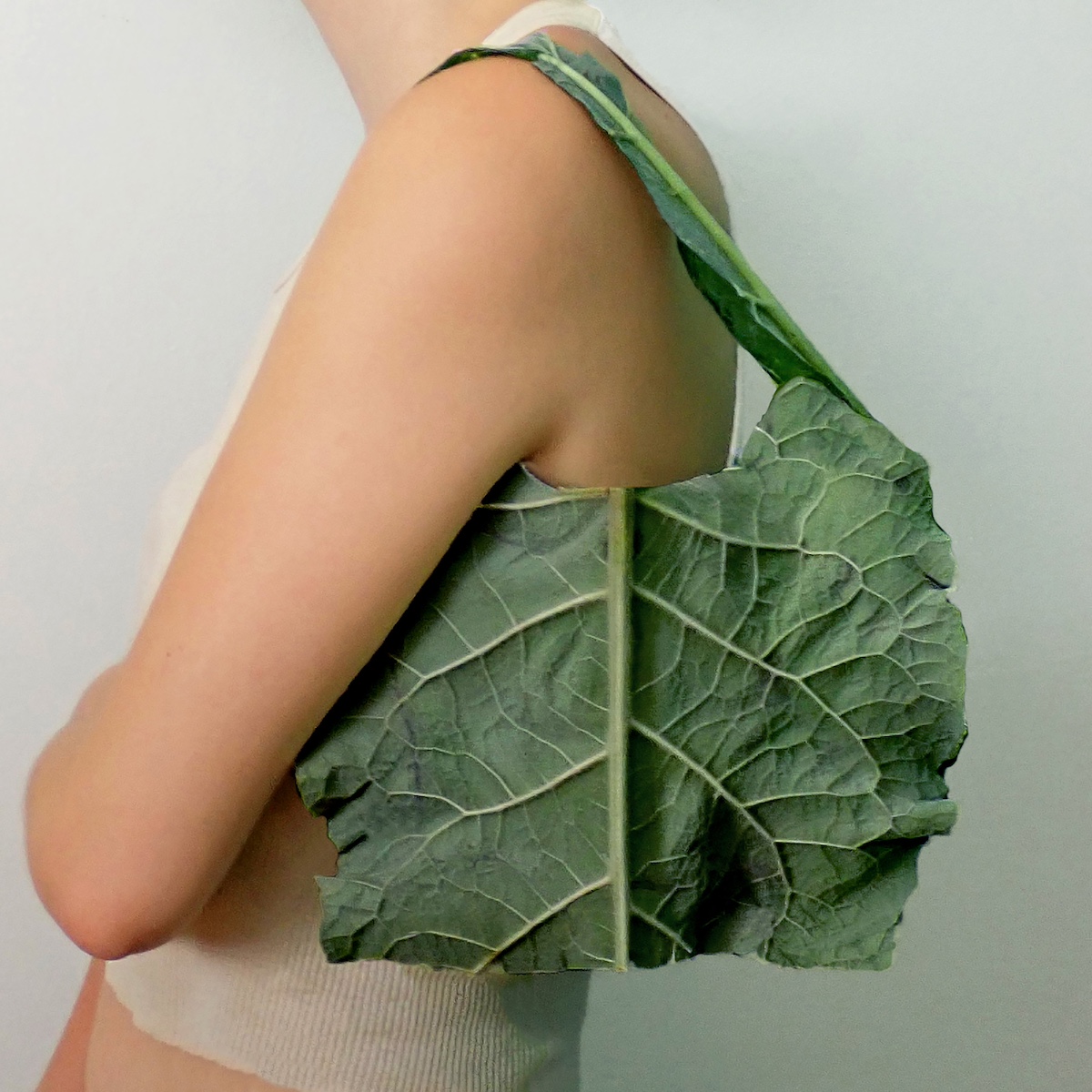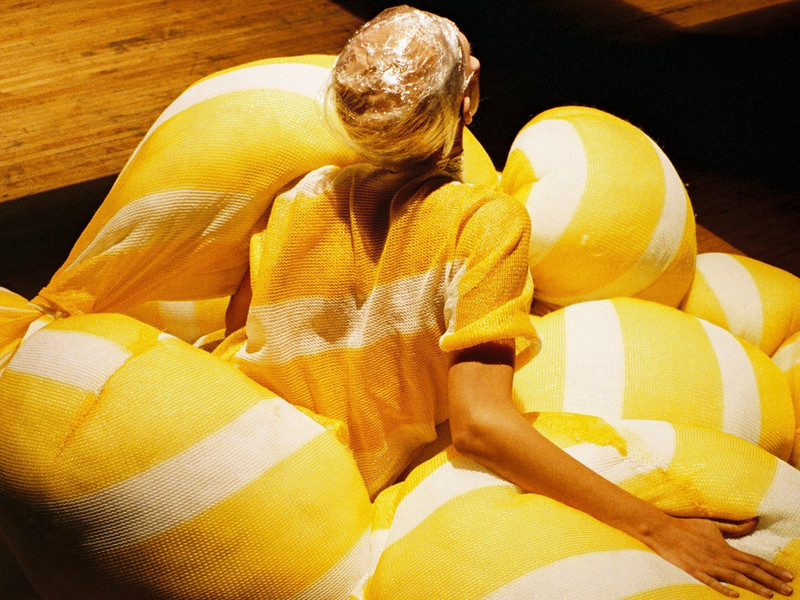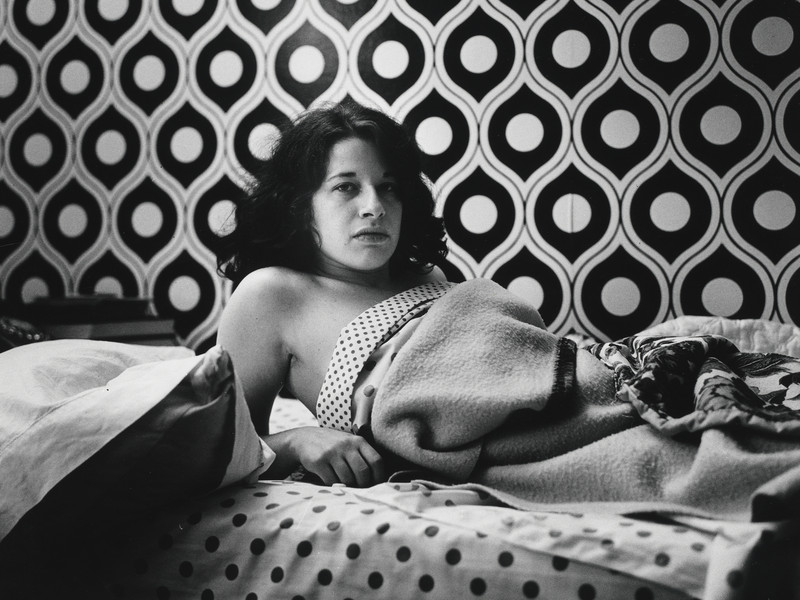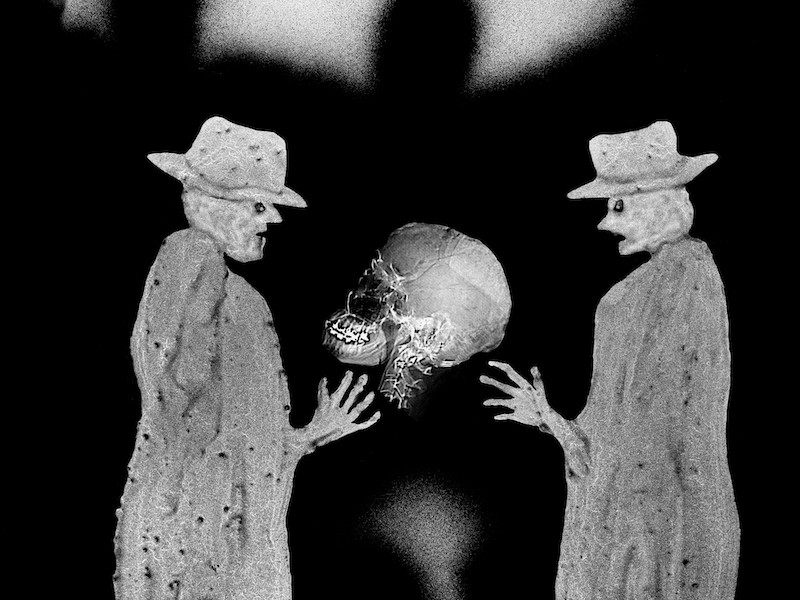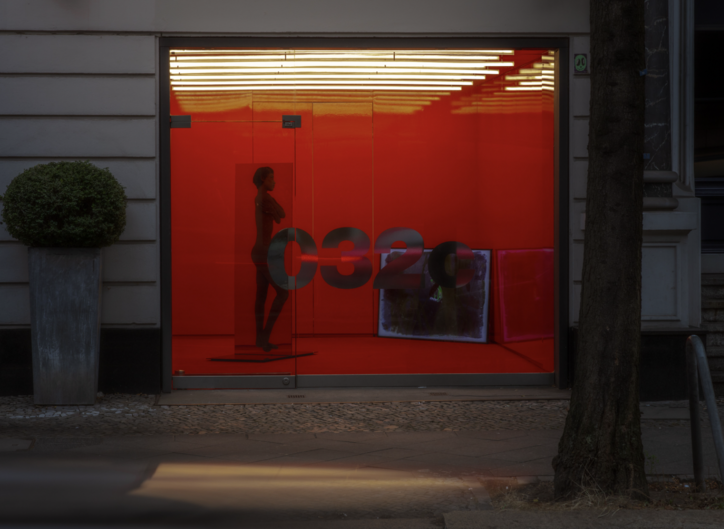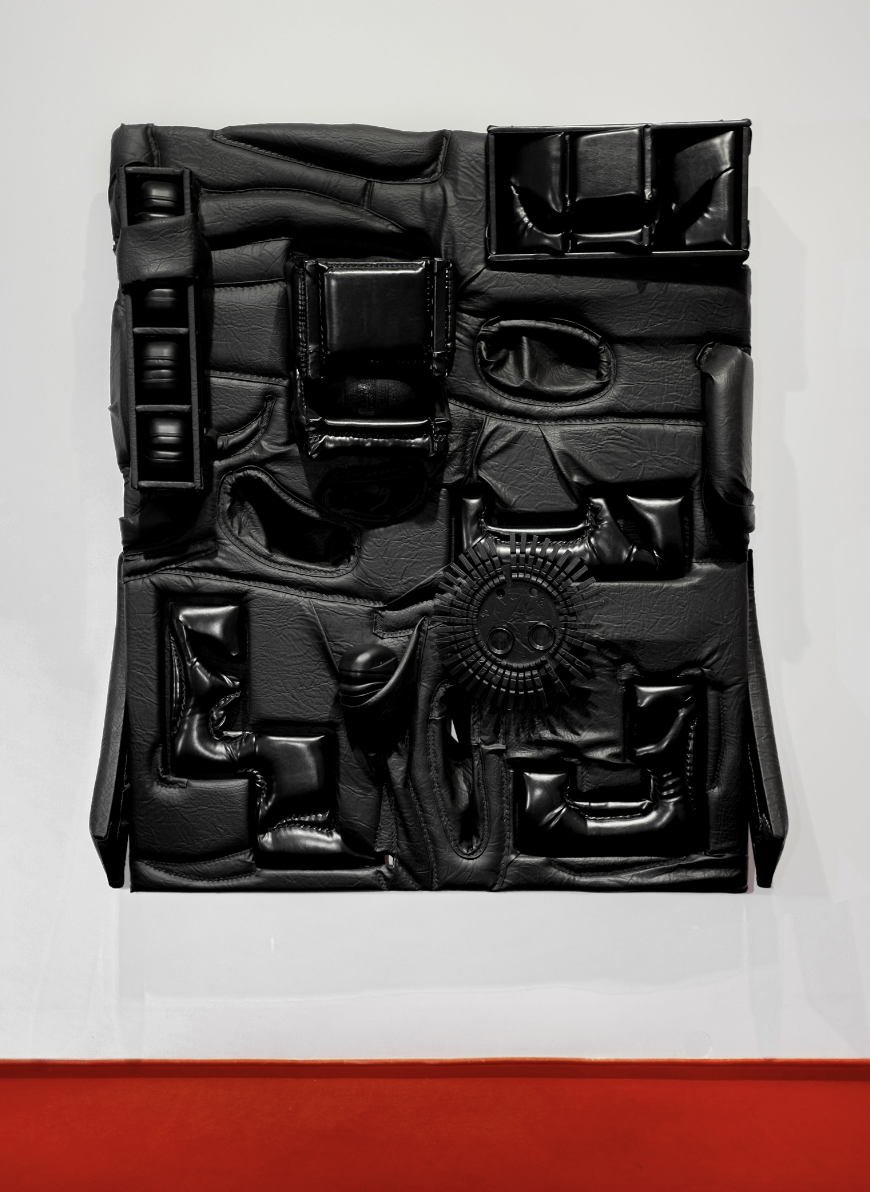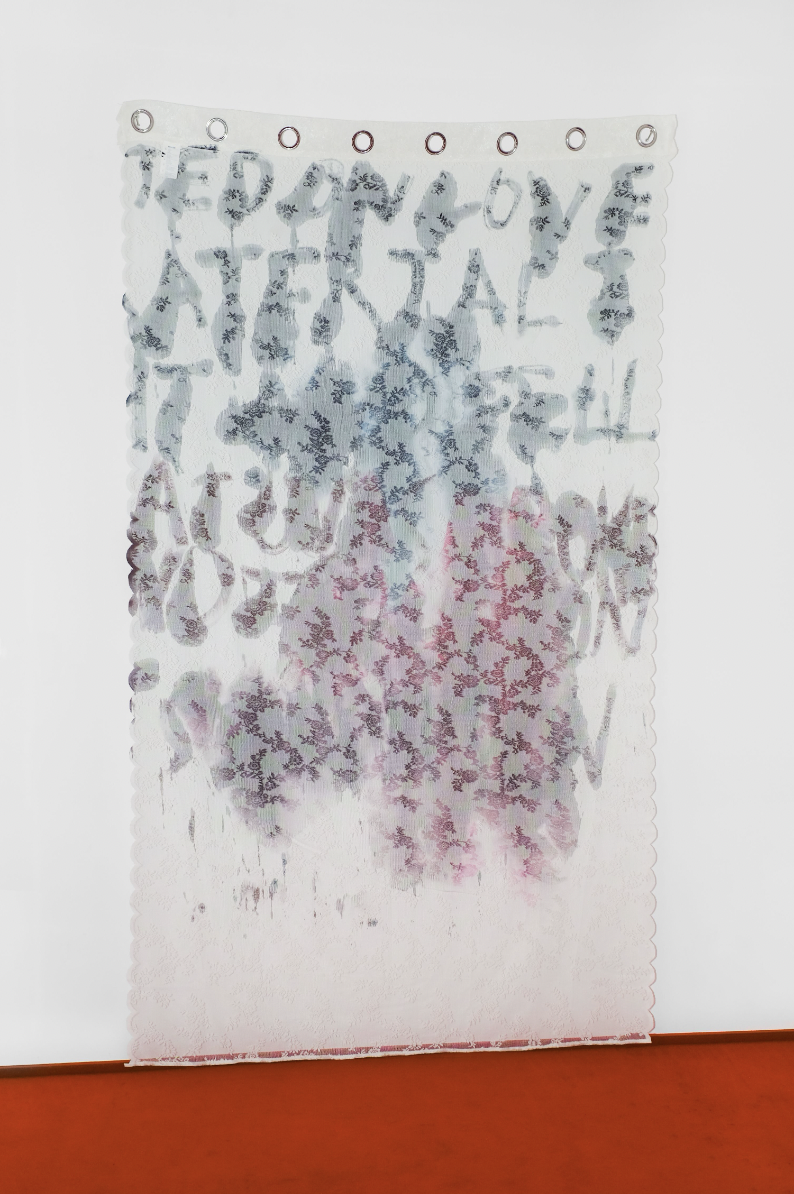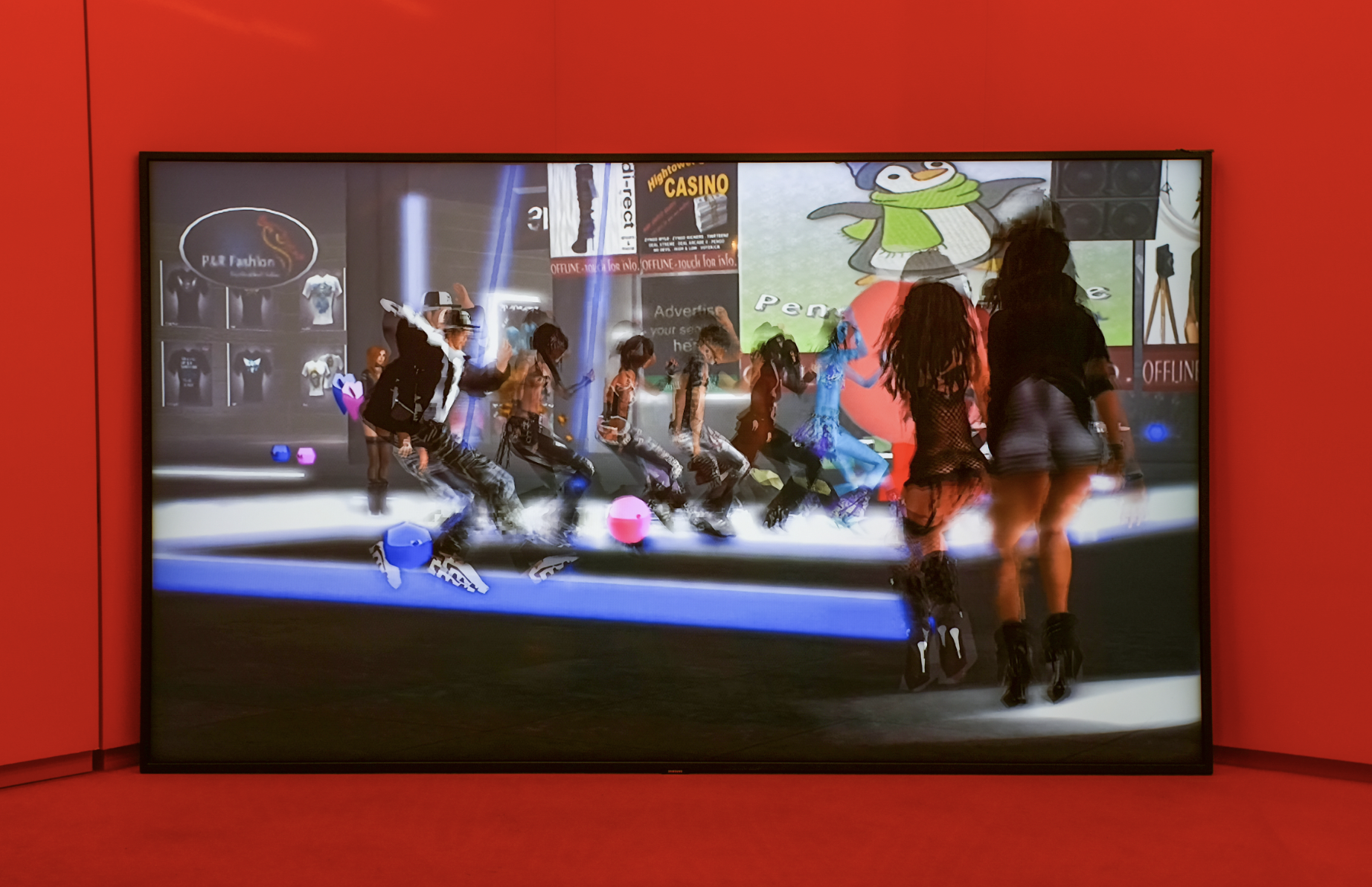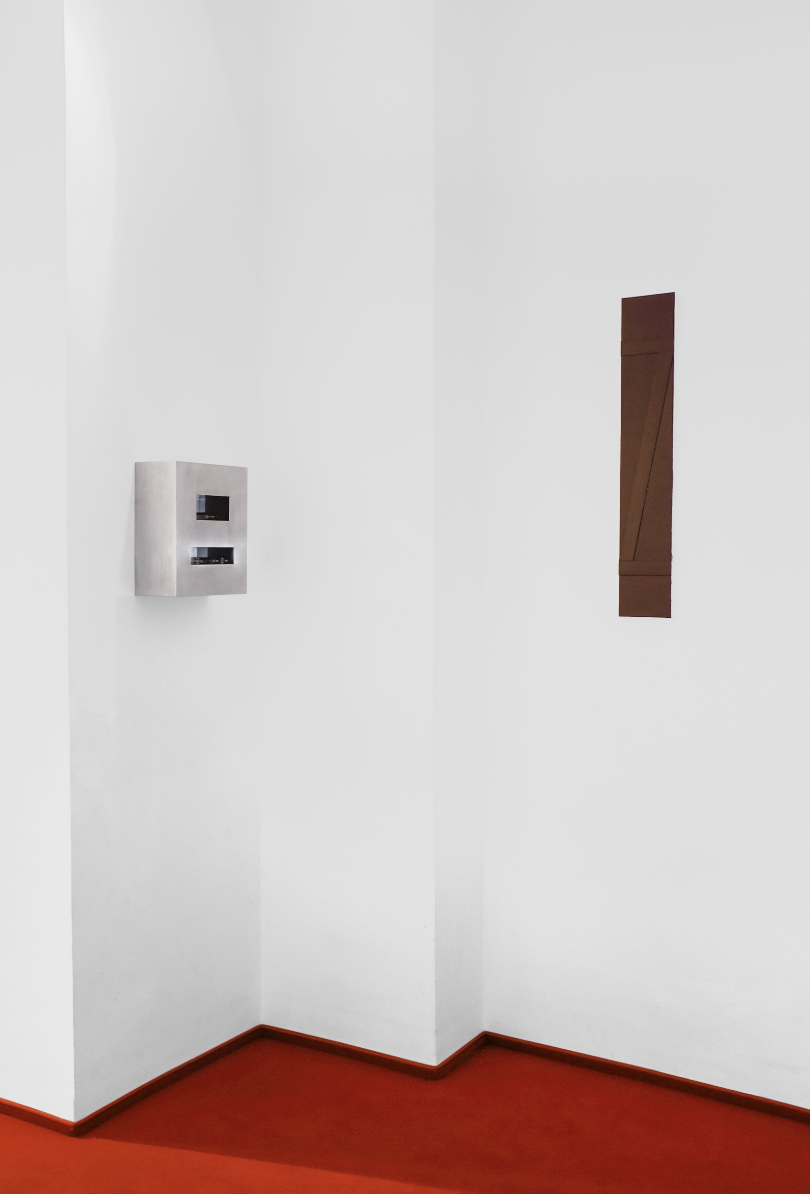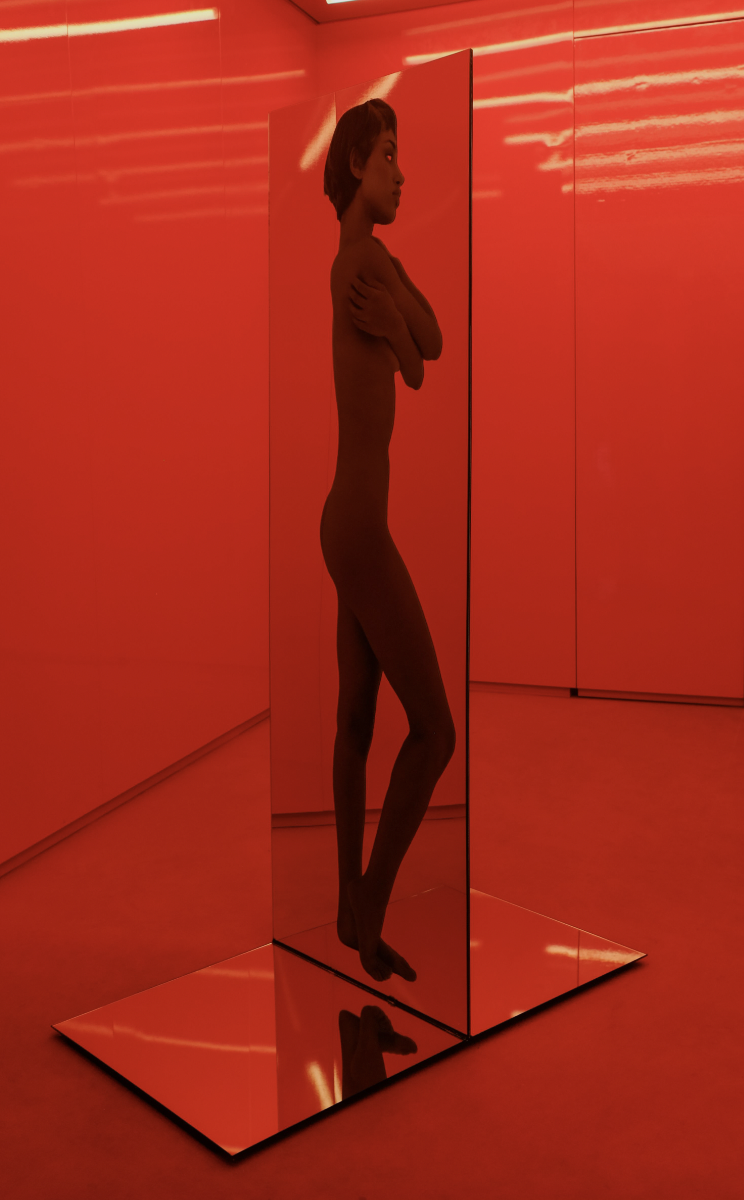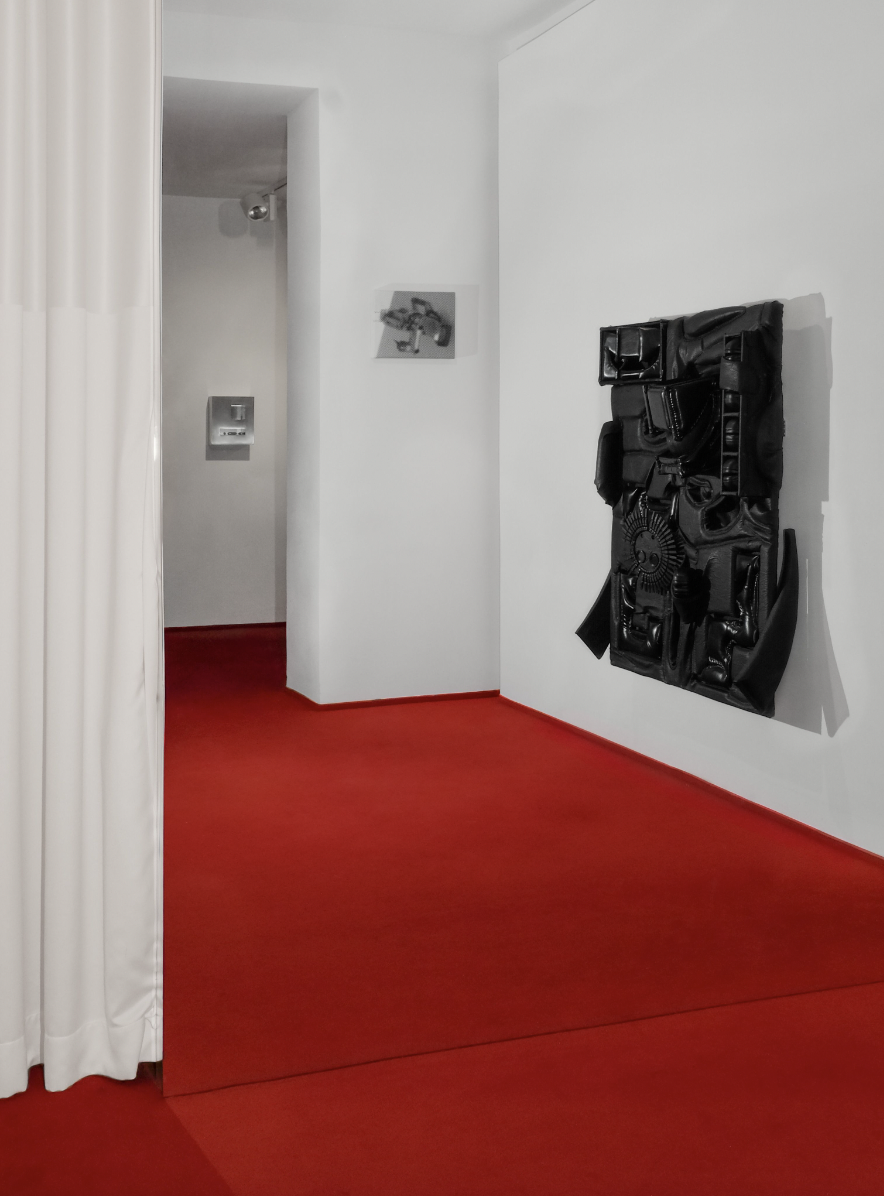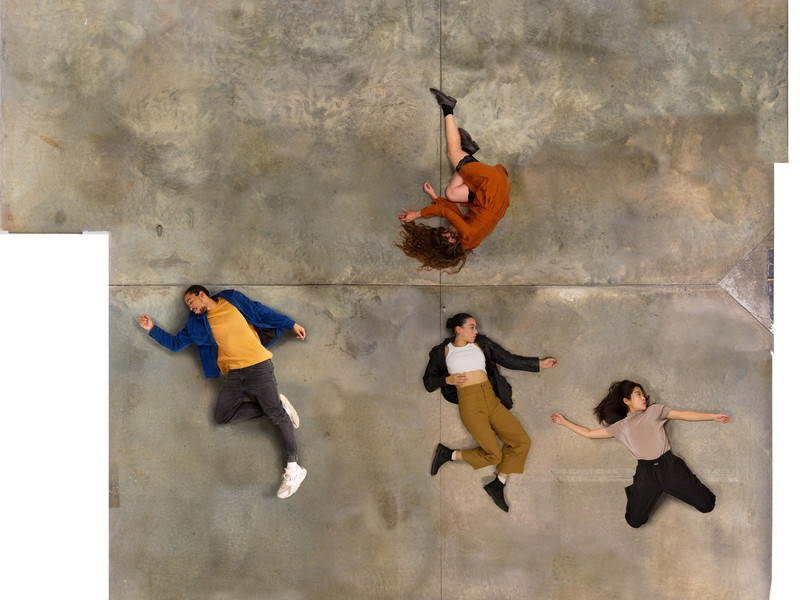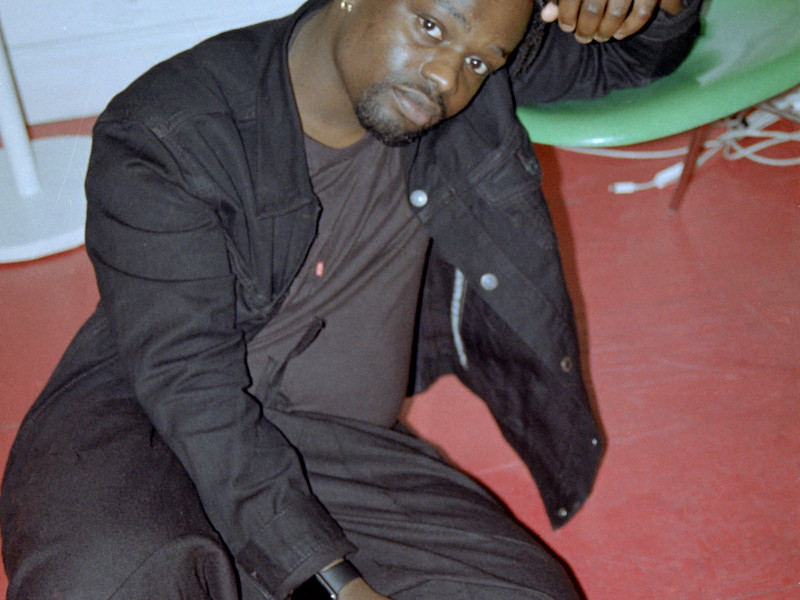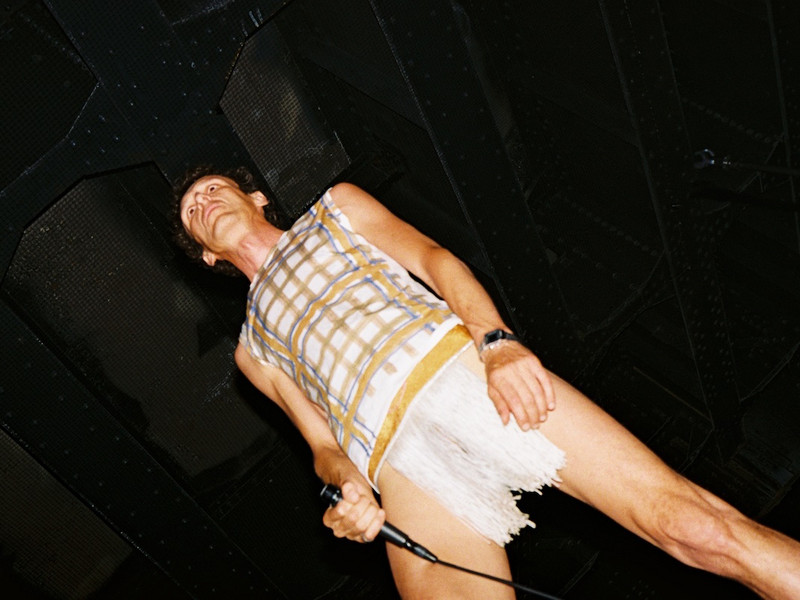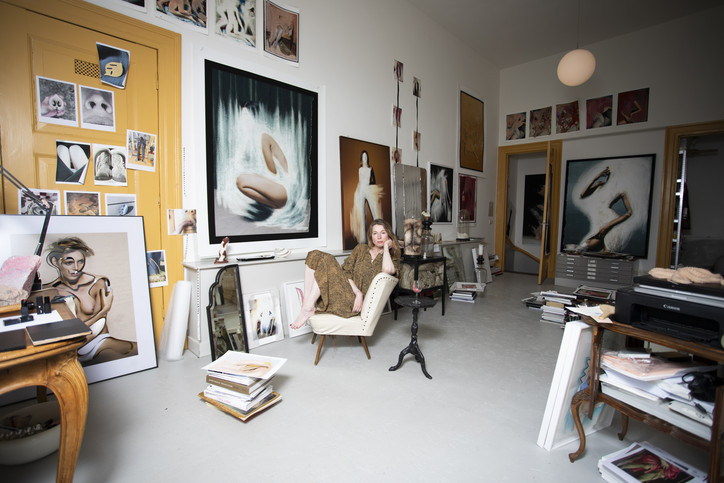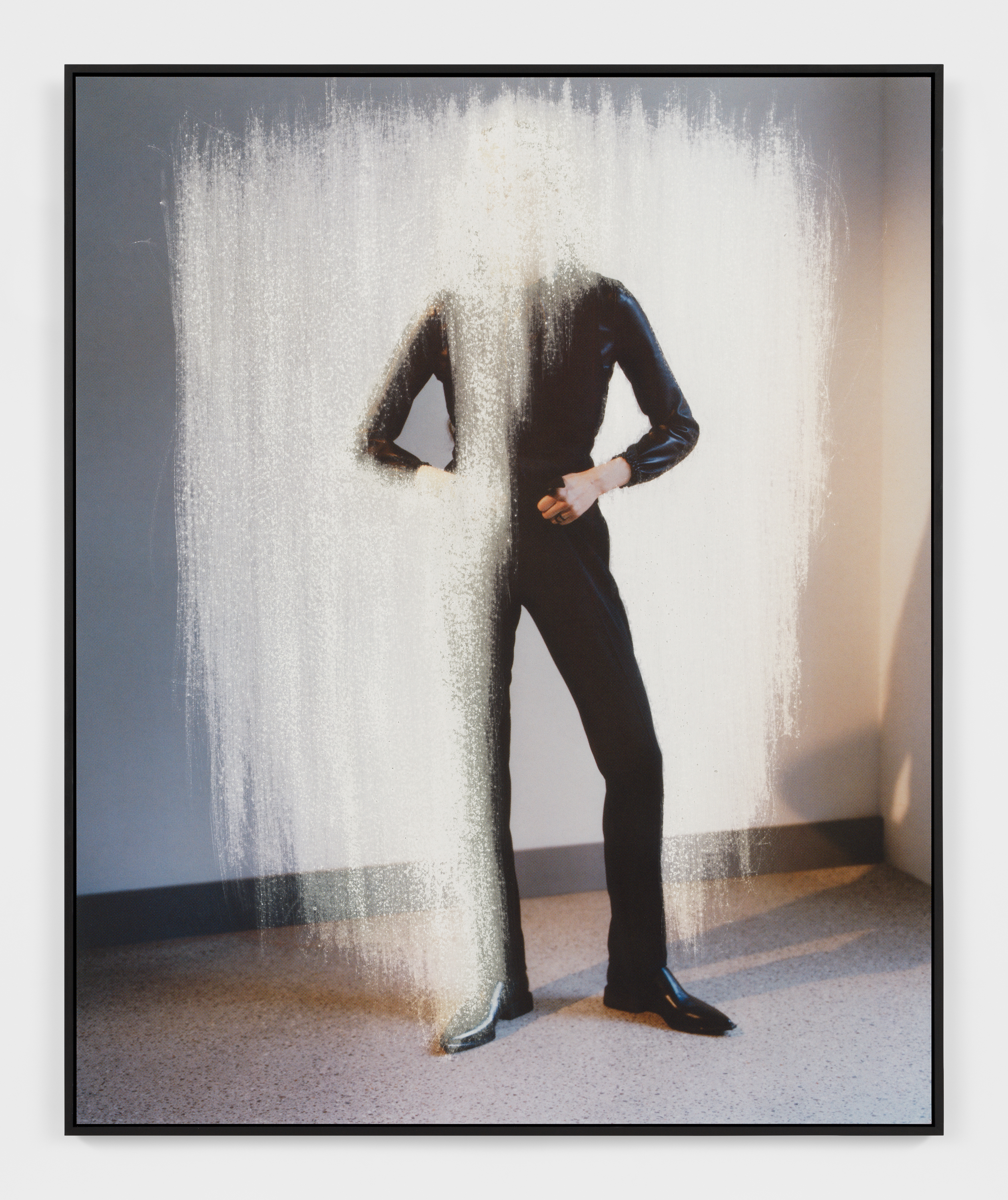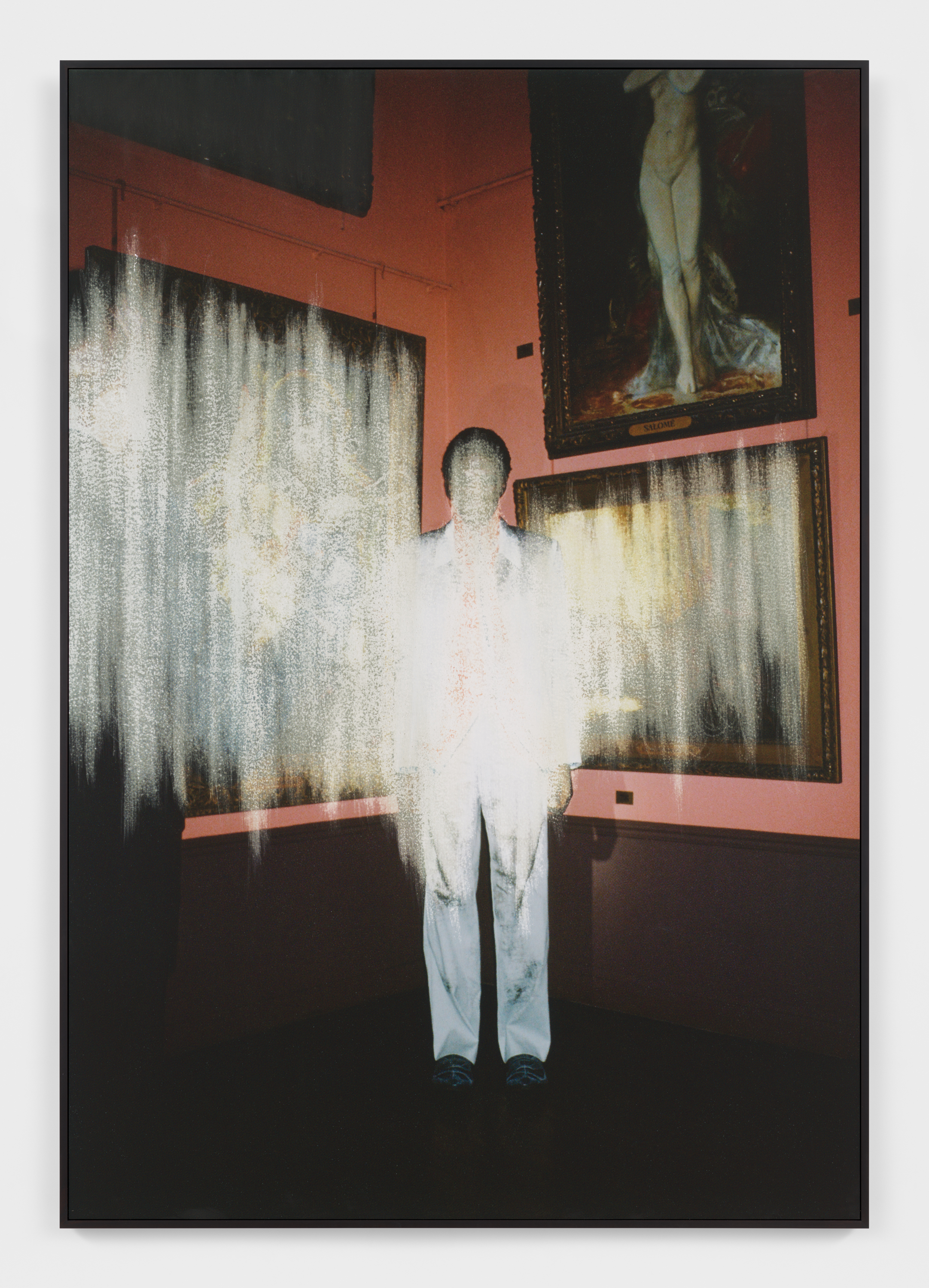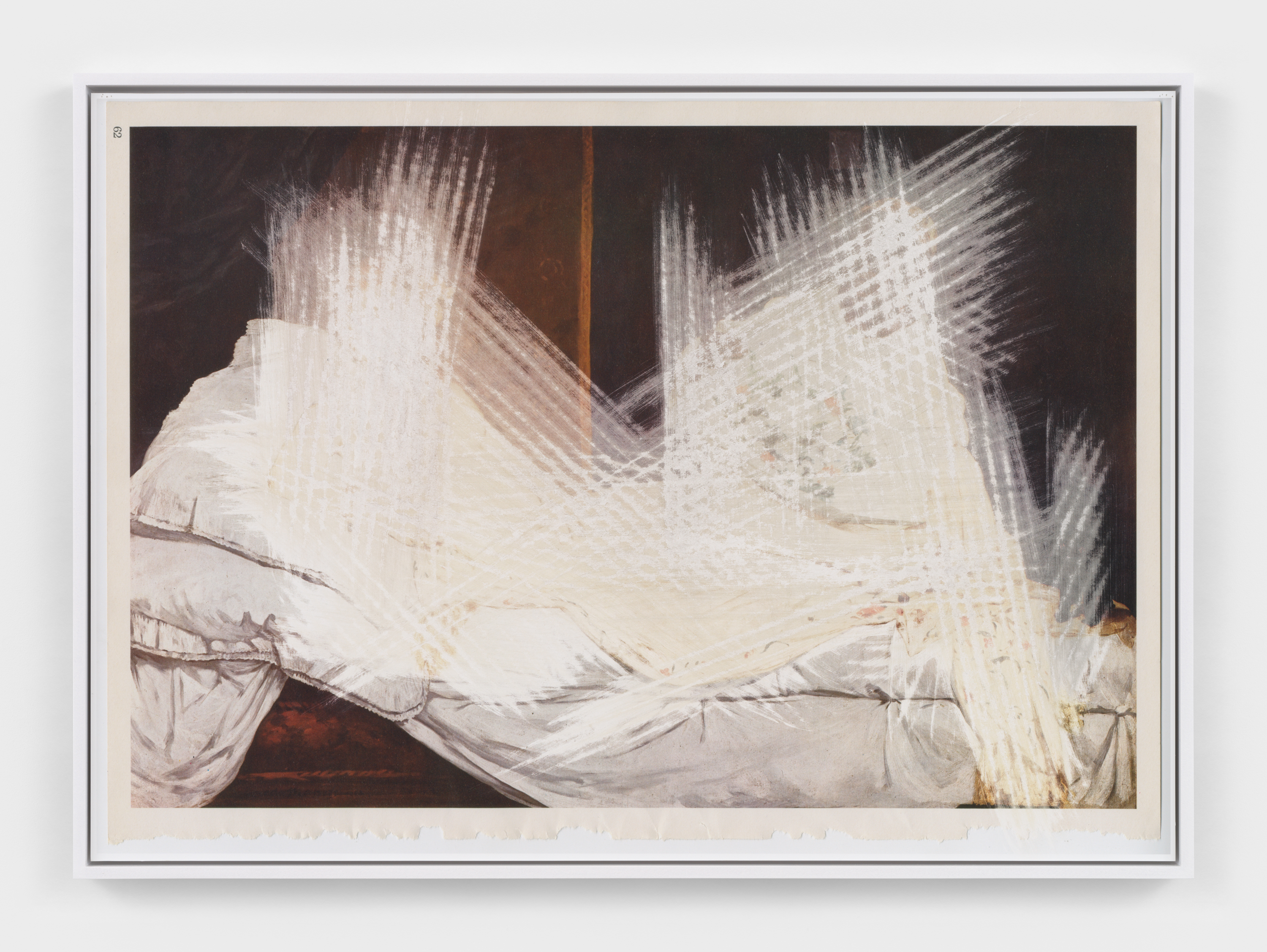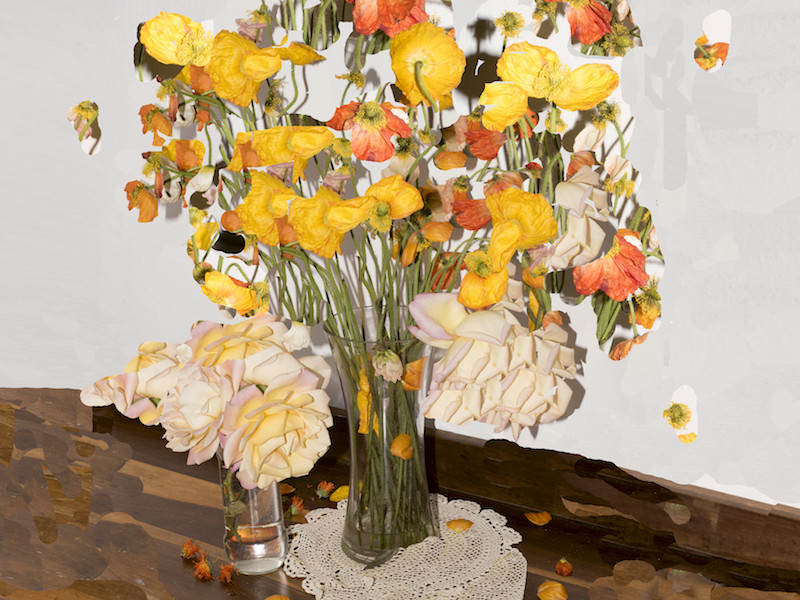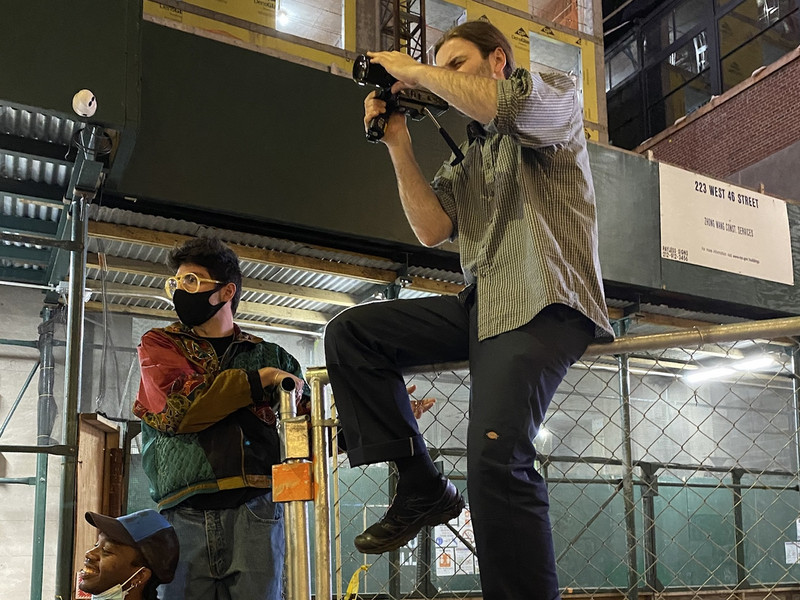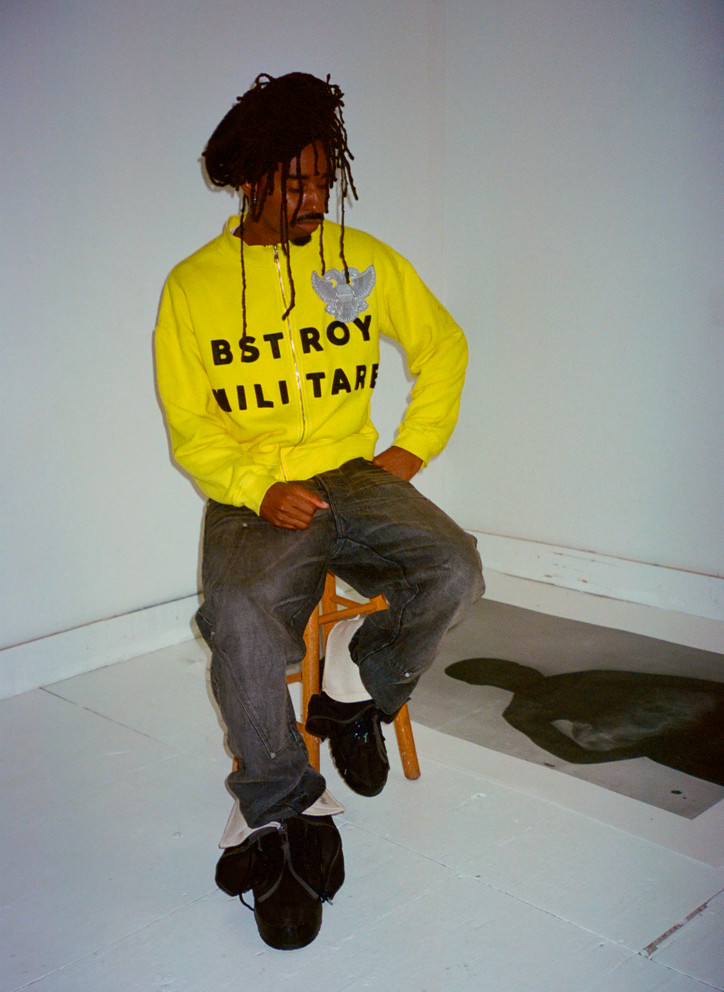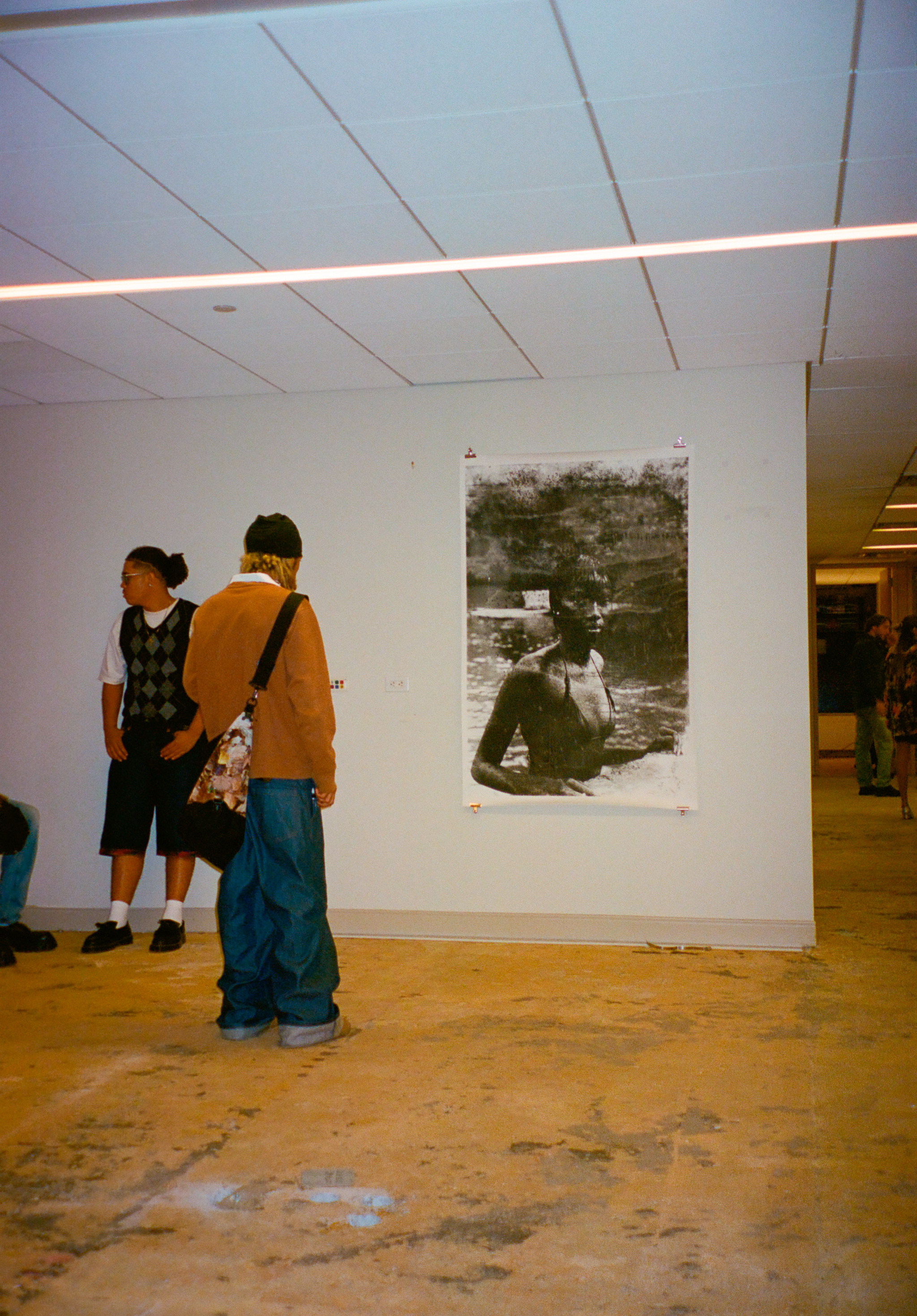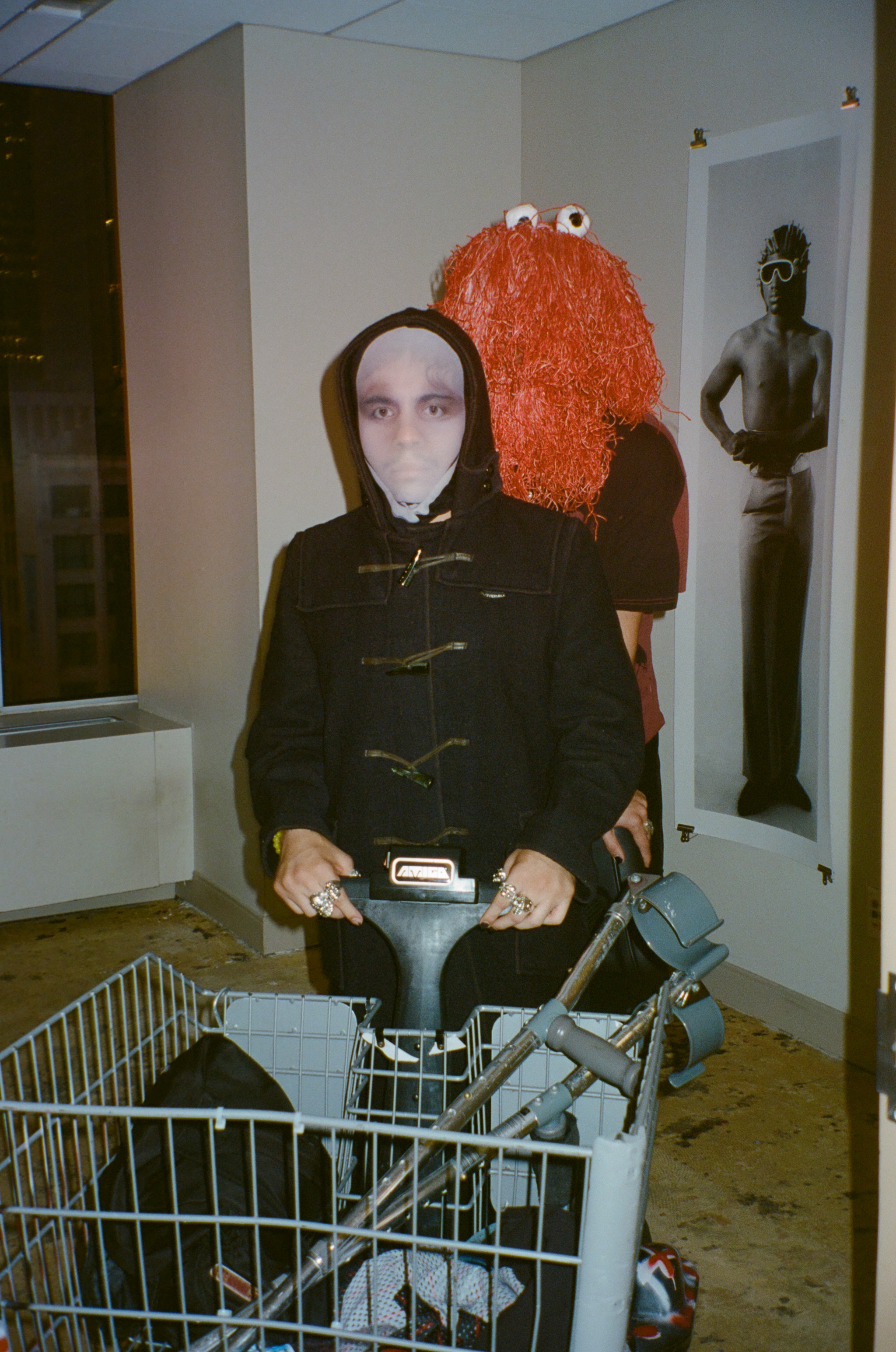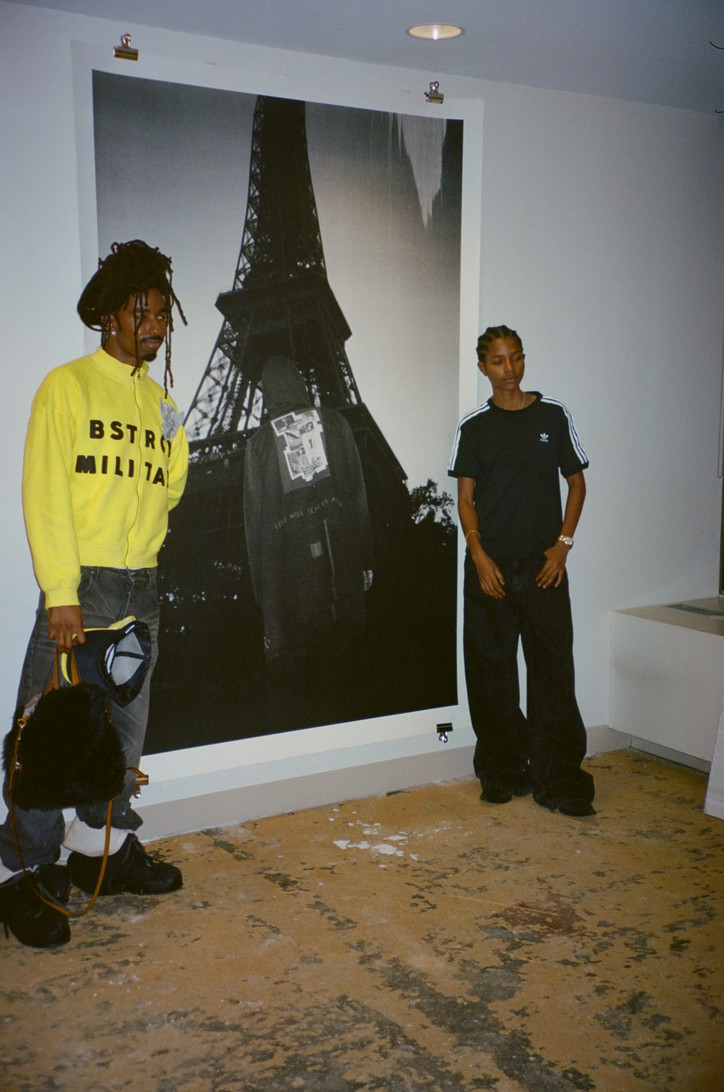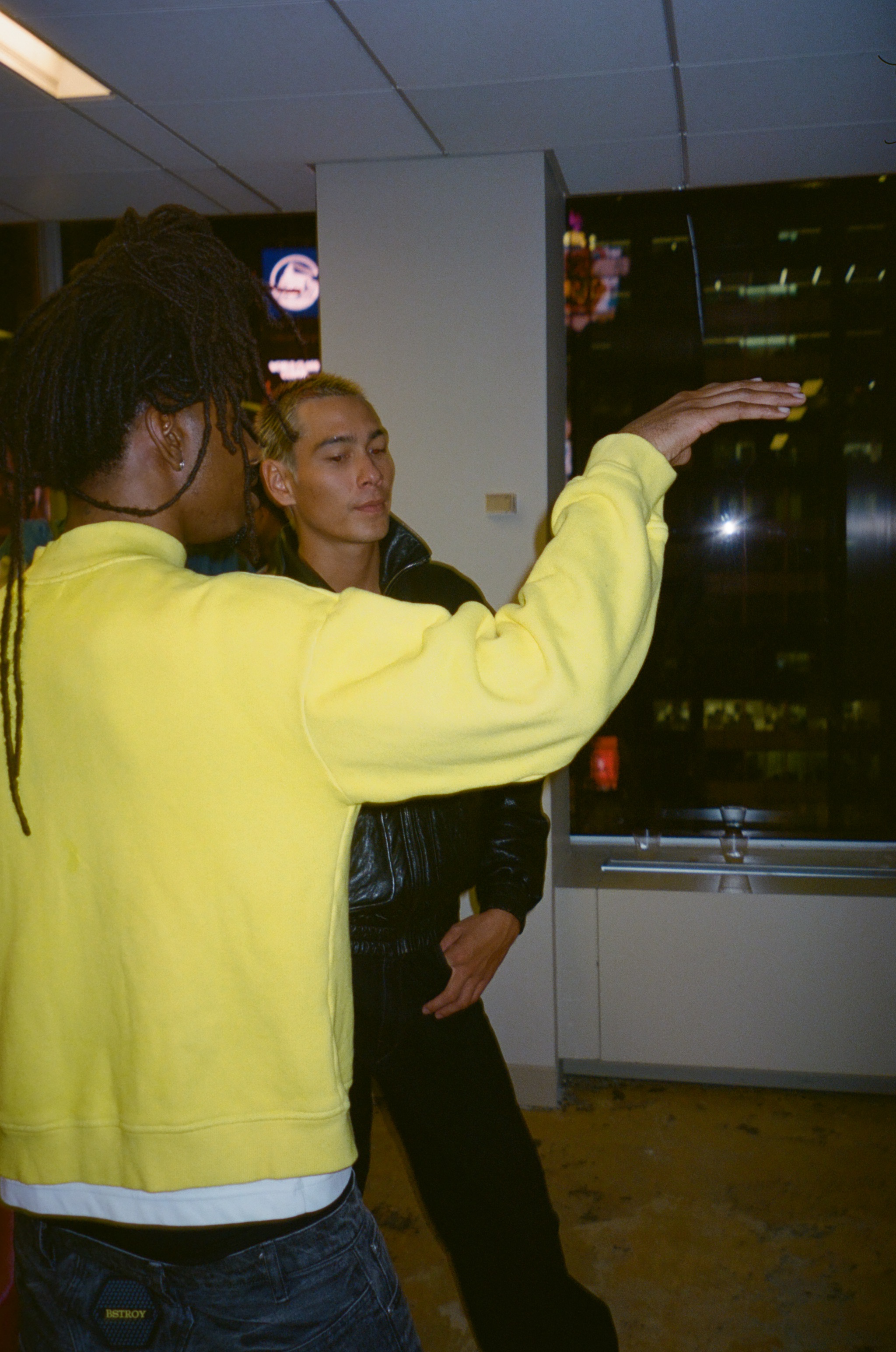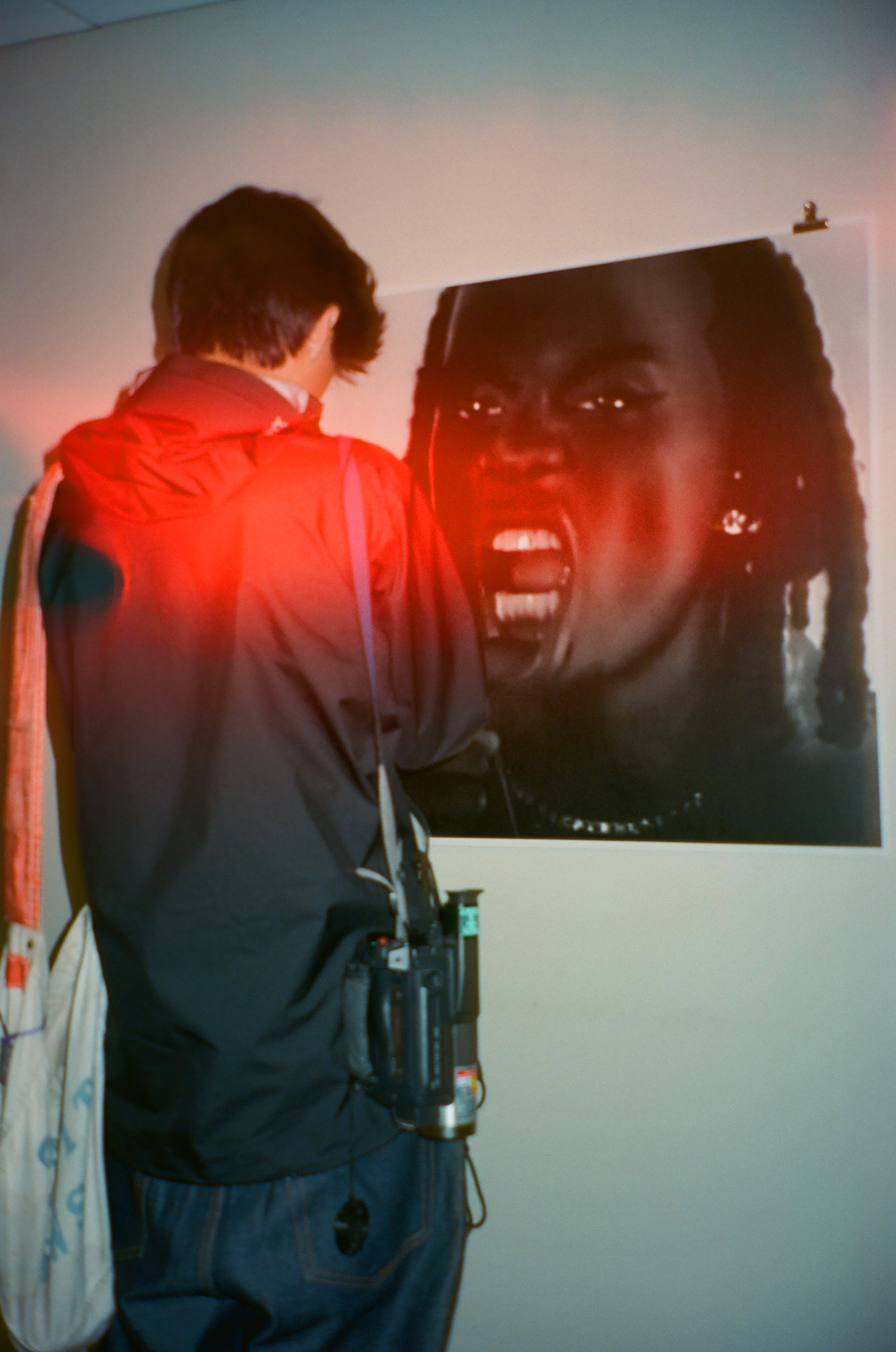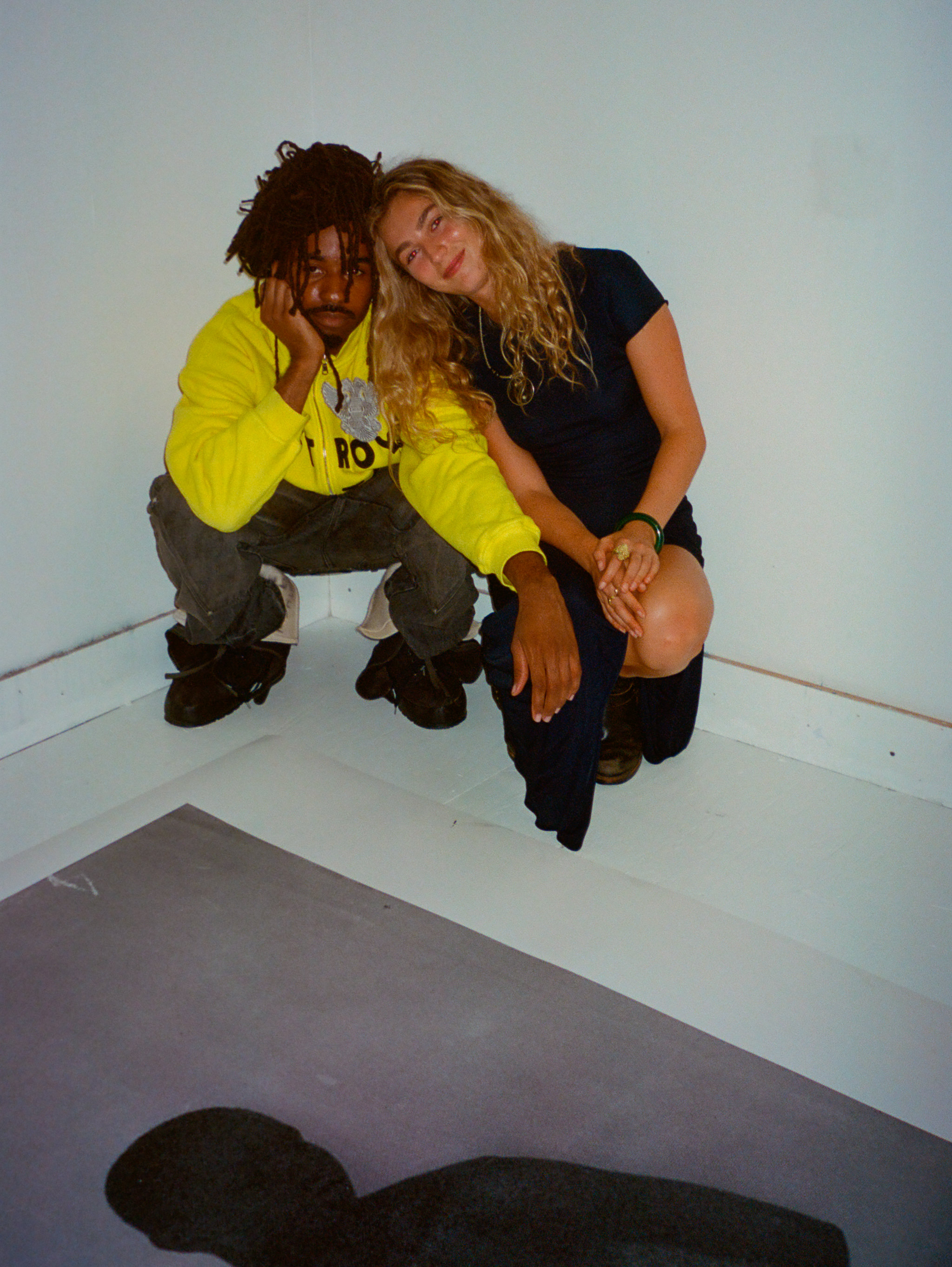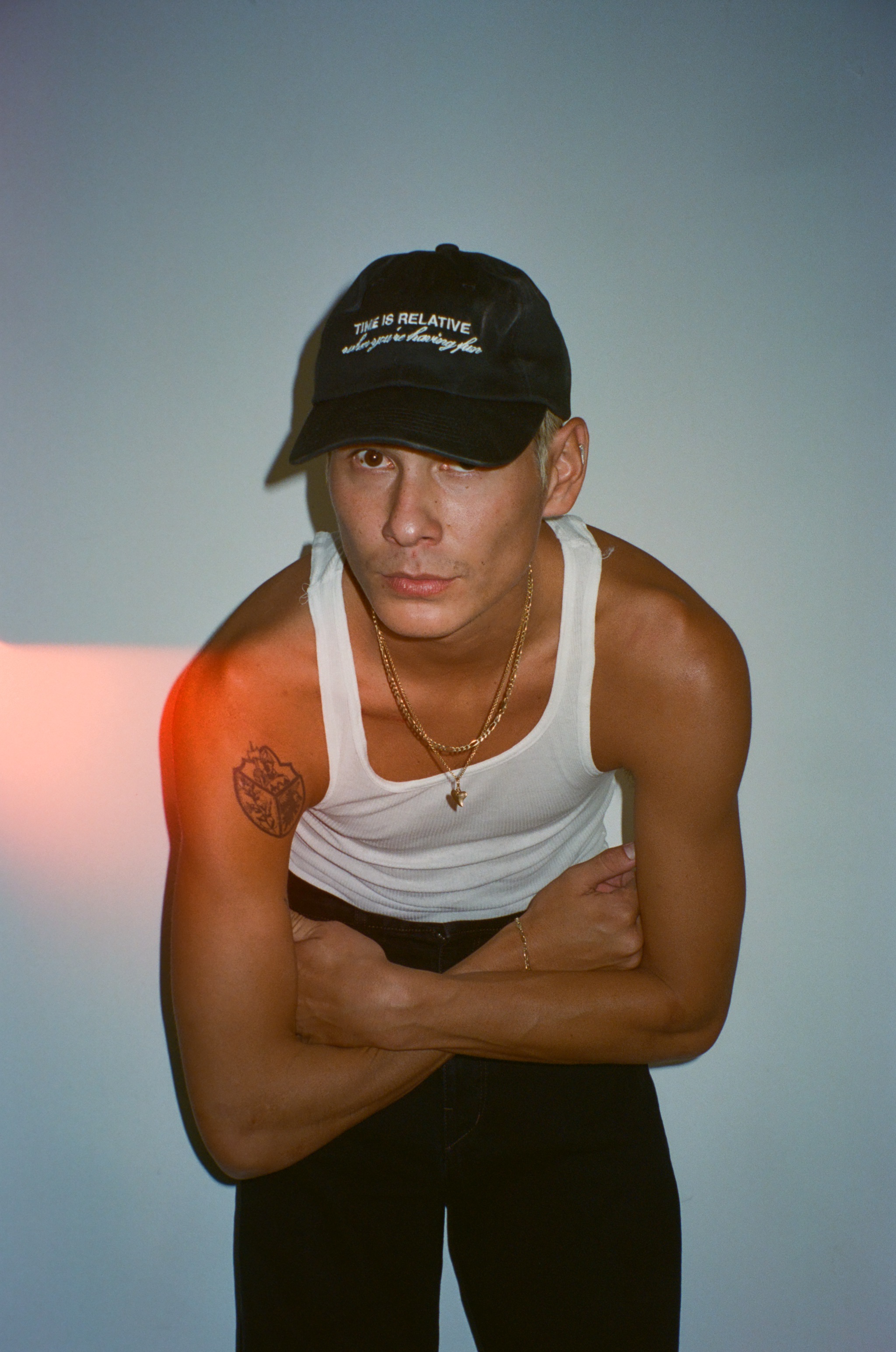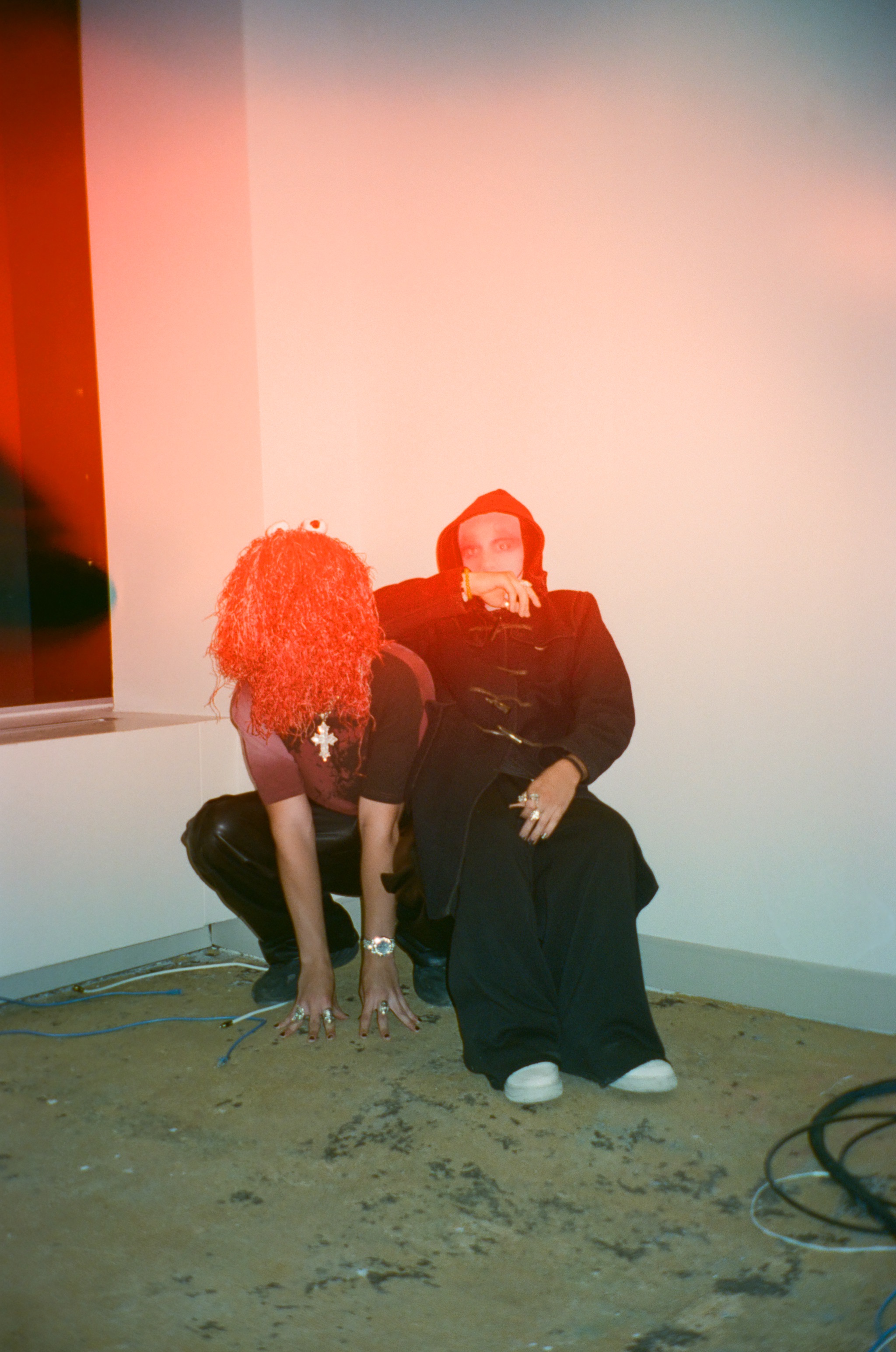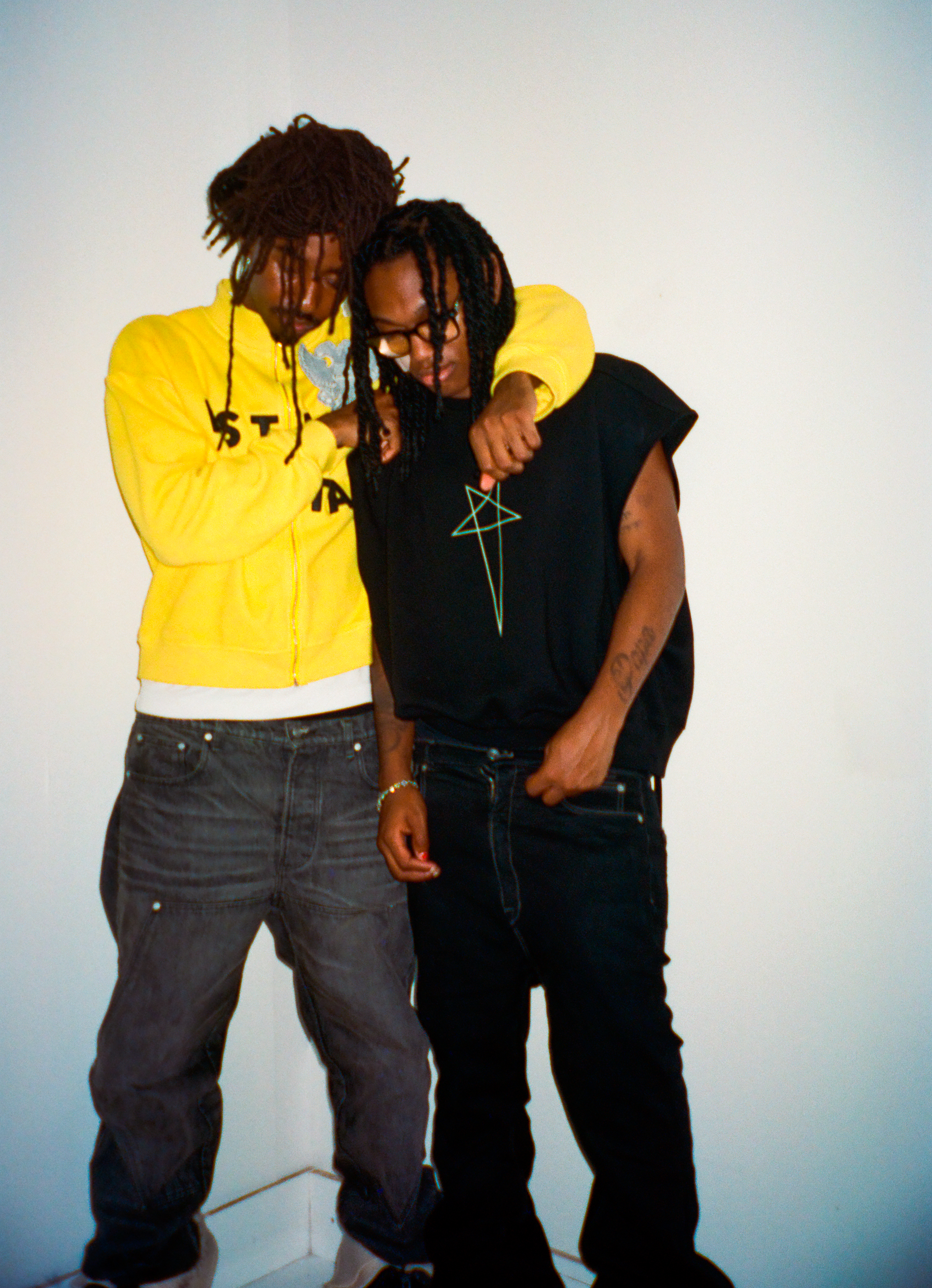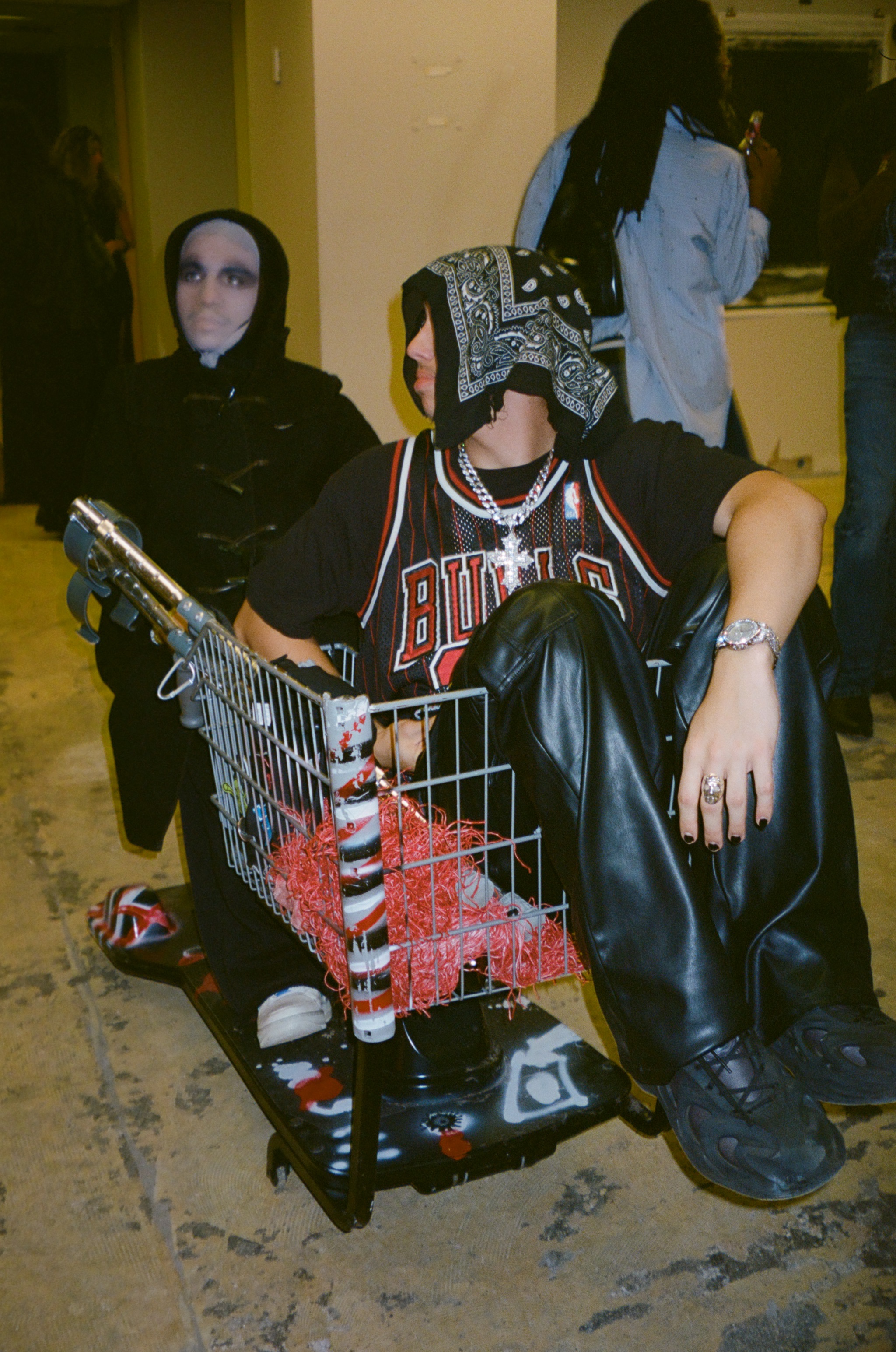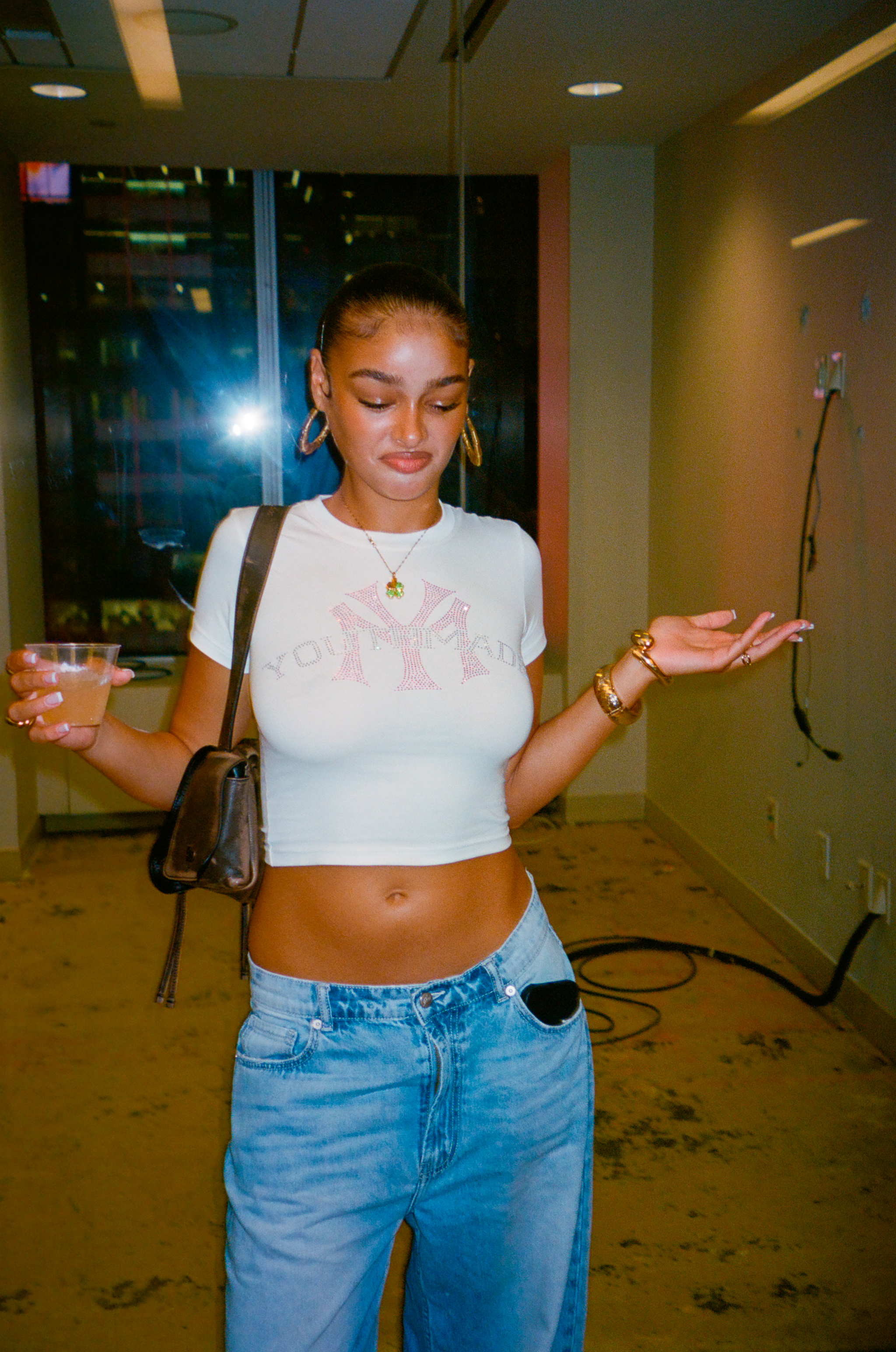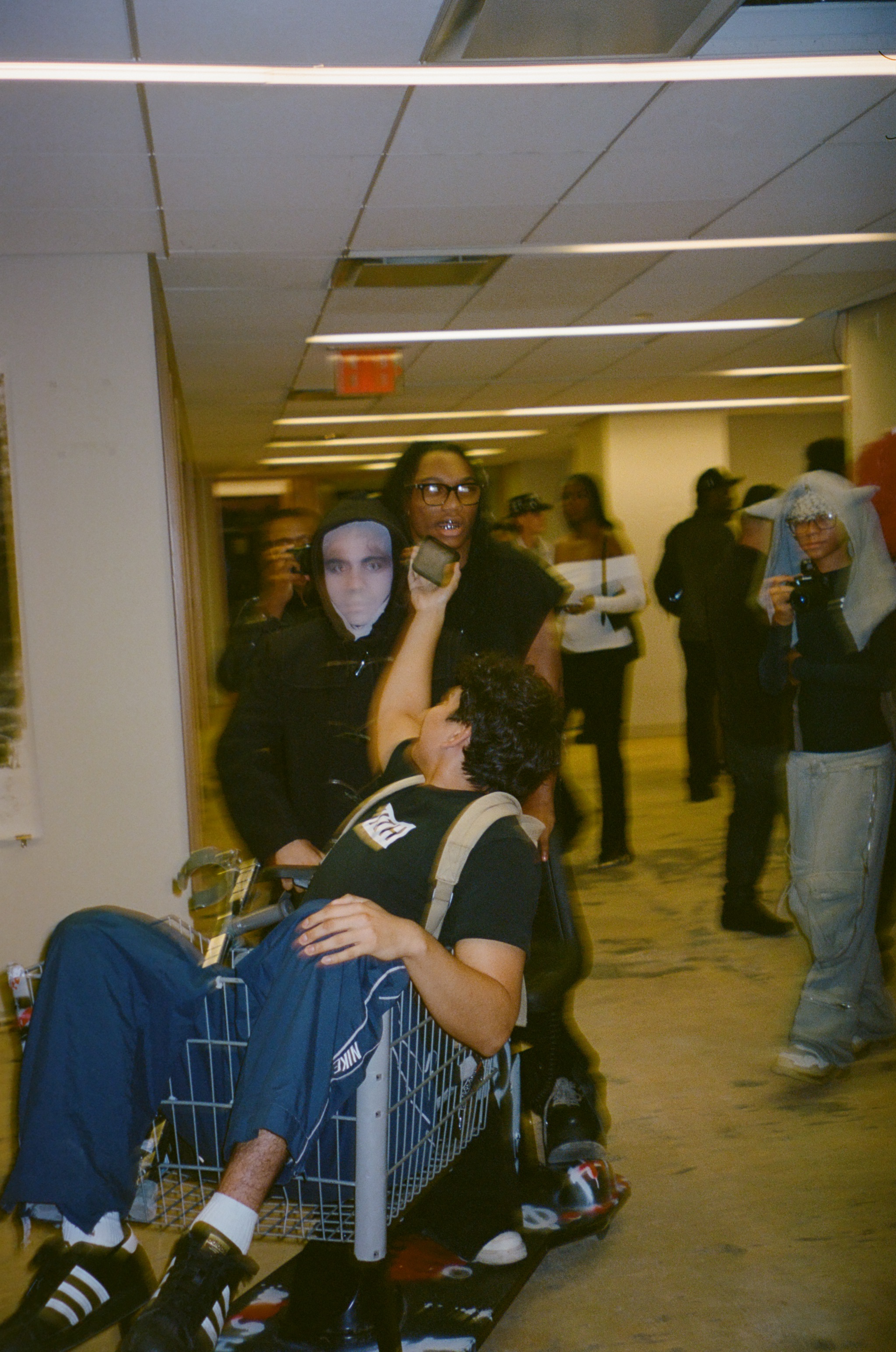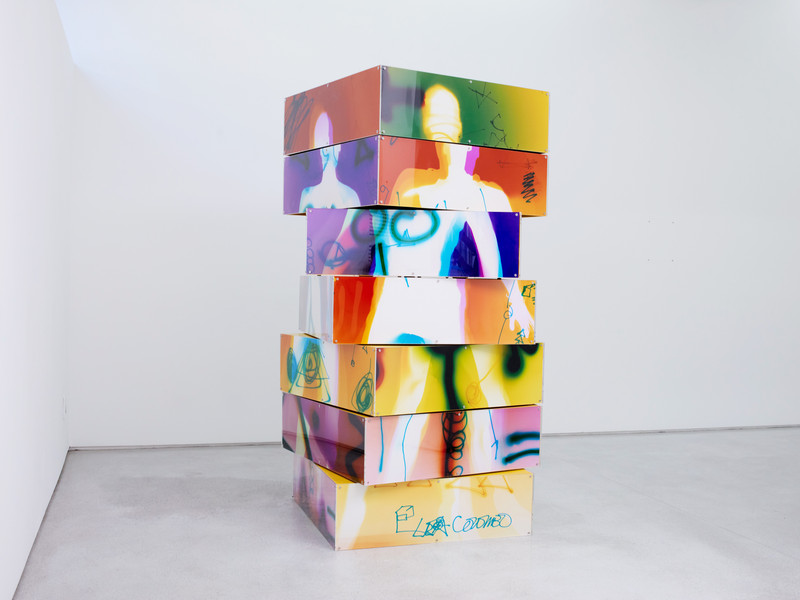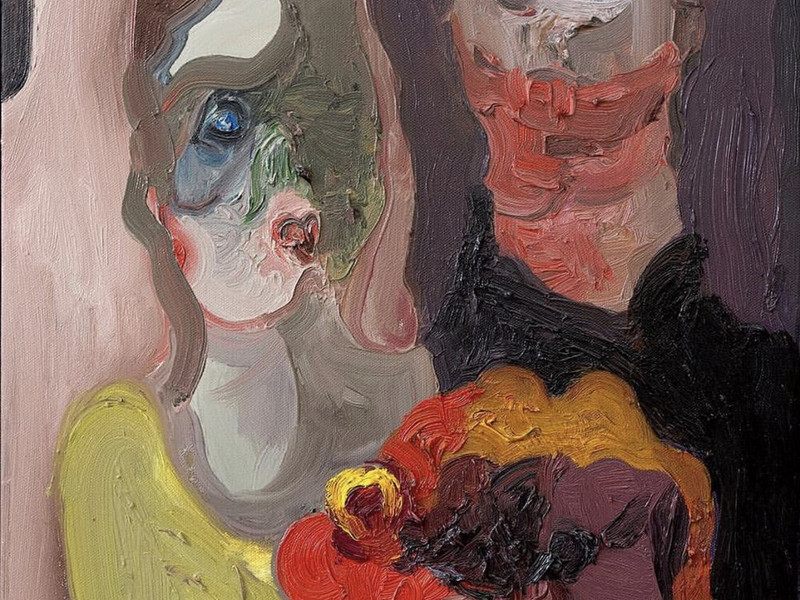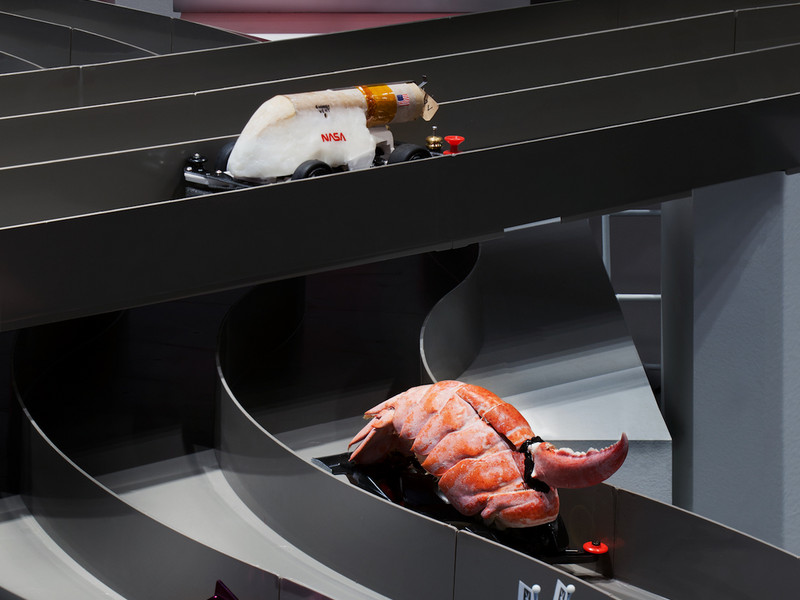Gab Bois Is Serving Up Wearables That Look Good Enough to Eat
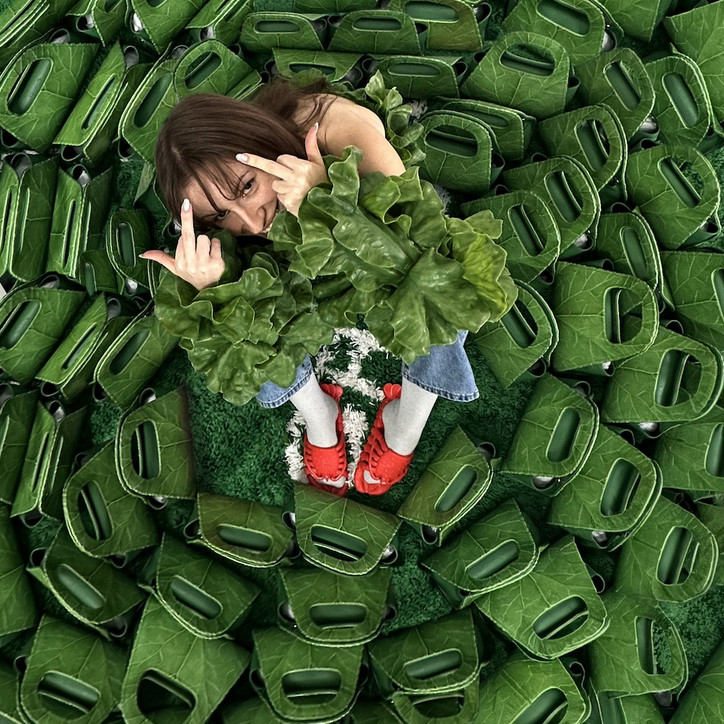
office caught up with Bois just after the new pieces dropped to dissect her brain, discuss what defines “art,” and dive into her latest menu offerings.
What first got you interested in creating things through a surrealist lens?
I was a big Tumblr teenager. I'm also an only child and I always loved to do crafty activities as a kid. I was always very drawn to nature and the long, repetitive task of assembling things and working with found objects or everyday things around the house. So I always say that my process today is a big extension of what I loved to do as a kid. I think that's where the essence of playfulness in my work comes from. I've always been really drawn to these kinds of mood board-style images — the best way I find to describe them is that they’re so visually appealing that you want to eat them. That's how I know that a photo is in a good place to be posted or shared.
There's that aesthetic appeal within your work but I also think there's a curiosity that comes along with it. As you said, that's very related to being a child and being curious and imaginative about all the things around you. When you were growing up, did you have an imaginary friend?
I had many imaginary friends in the form of physical things. I didn't have this ghostlike figure that only I could see and talk to. But I was convinced that my toys and stuffed animals had emotions and were coming alive when I was sleeping. Very much like Toy Story. I would put them in big lines and put the horses at the front and then let them lead the way. I felt this very close bond with inanimate objects that weren't so inanimate in my mind. I feel like that's still very much present in my work and my relationship with objects as an adult, being a big collector of ceramic dishes and found objects at the thrift store. I'm very drawn to the visual quality of objects.
When I was younger, I also loved spending time at the grocery store and fruit and vegetable markets. Any place where things are neatly organized, even at the hardware store. So to this day, I think that informed a lot of the subjects of my work. A few years ago, I think in 2018, I created this photo of a snow cone filled with dirty snow. To me, as a kid, that was always such an intrusive thought of wanting to eat the dirty snow because it looked like cookies and cream ice cream. So now as an adult, this is my visual representation of that. But I feel that there are so many subconscious references from my childhood that are very present in my work all the time.
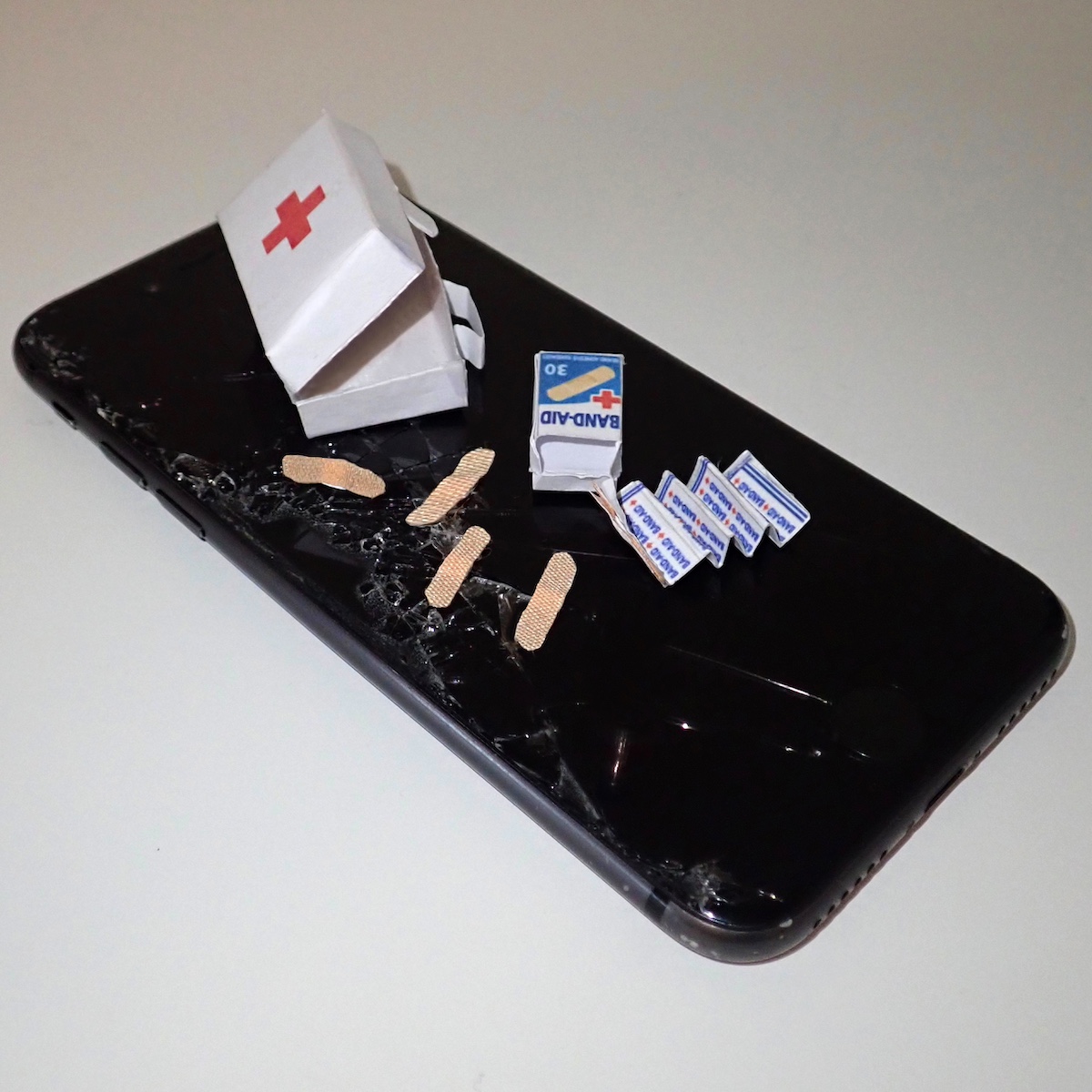
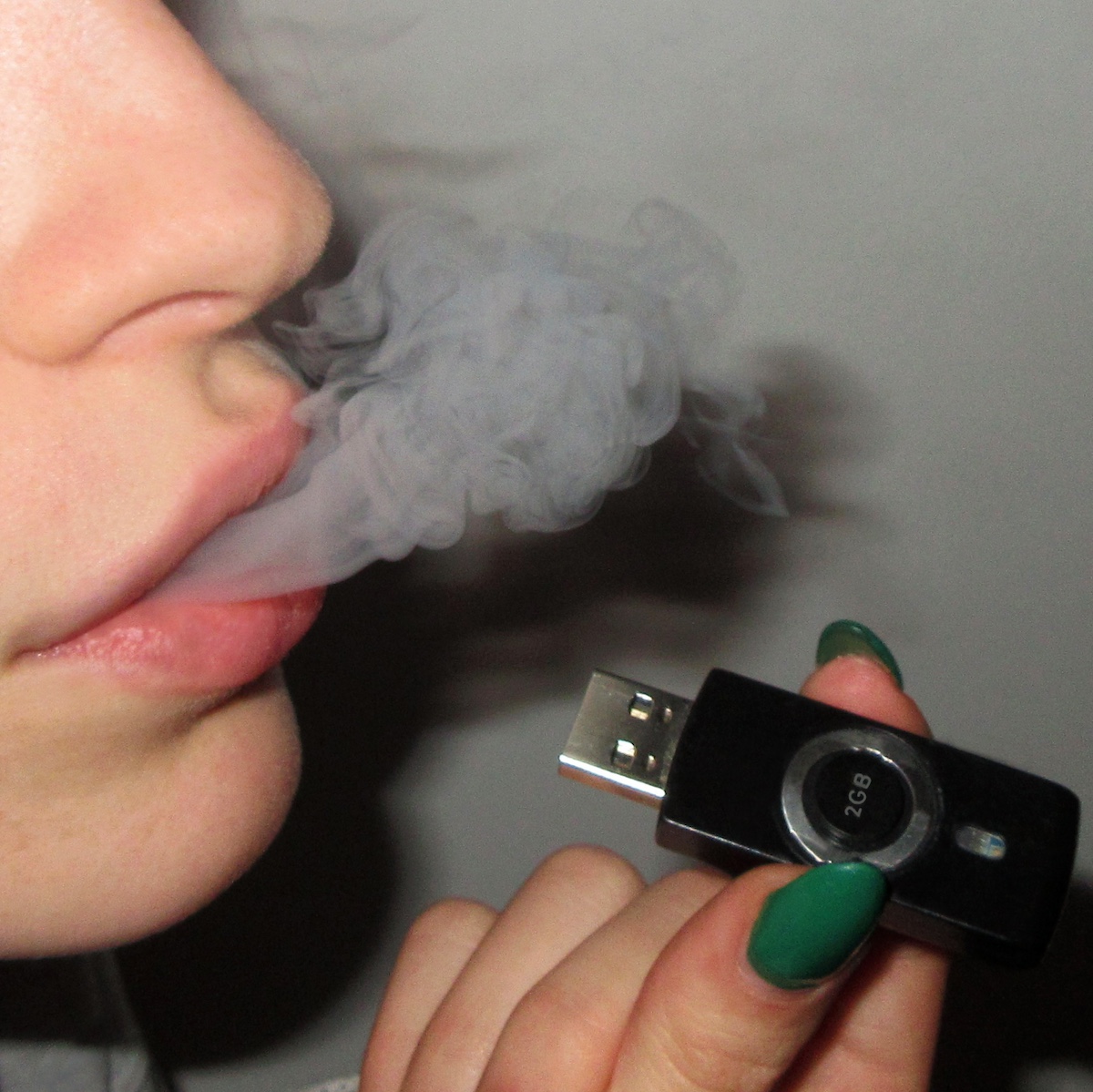
Tell me about the meaning behind your ready-to-wear capsule name, Canapés. Why do you choose to produce slowly and how do you balance creating freely with creating ethically?
My ready-to-wear has been a passion project that has taken some time to be ideated and produced. I've been used to, for now, eight years, producing at a really fast pace. And I always say that my Instagram is kind of an exploration of the creative muscle — keeping it going and then moving on to the next post after. This was something that allowed me to really move at a slower pace and be more intentional — this also gave me more time to be a perfectionist, which can be a double-edged sword. But I'm very happy with the way this turned out. The name refers to finger foods. I love the aesthetics of finger food, for one. I love that they are always more presentation than taste. So that's very much what I wanted to portray: wearables that are all about aesthetics. I'm not necessarily trying to bridge that gap between function and the visual aspect, but creating pieces that are more about visuals than about function.
We've only done two drops, but they've been food-focused and it's a subject that I never get tired of. But because it is a personal project, I kind of want to just leave room for it to be whatever. I want it to be my own playground. In terms of the production process, we produced the bags in Italy and Portugal. And then we worked with someone to assemble all of those parts because the facades of both the shoes and the purse are silicone and PVC made. And then in terms of the quantities, especially today, it would be very crazy for me to say that anyone needs any of these products.
So I think this is an homage to the objects, but it's by no means something that has a place to be mass-produced and consumed in high volumes. I think the beauty of it is that it is in small quantities. It's something that's just a special thing to look at or to own or to wear. And just like my other work, I like it to serve many functions and to be adaptable.
I think for people who have been following along with your work, that's the intention that you set with your visual work and the digital renderings anyway. There's such a focus on the artistic aspects of what you're creating that I think it set the tone for the ready-to-wear pieces. A lot of fashion lately is not about fashion as an art, but I think seeing these pieces that are so intentionally created shows a different perspective of what fashion can be. Why do you choose to use everyday, mundane objects in your work?
I think it's a matter of relatability for me. It's more fun to subvert something when you know that most people have the reference. I find there's more power in it than if you're just doing something for yourself. I understand doing something for yourself and being the only one to get it. And sometimes I do like to have those Easter eggs in there for my own sake. But the bottom line is that whatever I am into and what I find visually appealing at the time, will most likely be included as a subject. I'm based in Montreal and we have four super distinct seasons, so I'll get very inspired by seasonal fashion, seasonal foods, and things like that. So whatever is in my lens at a certain moment is probably what's going to end up being featured. And like I said before, I still find a lot of enjoyment in places like grocery stores and hardware stores so that's where a lot of 'aha moments' happen.
You could totally make it feel like people are stepping into some of the photos you've made or getting to live within your pieces. For this new drop, I know there were some intentional choices behind using the clementine as a symbol and the feelings that that motif brings about. How do you want the collection to make people feel when they wear it?
To me, the clementine symbolizes luck. And then the orange and the citrus, in general, can be so fresh and optimistic. Just like the images, I love it when my work is digested at people's pace and when people bring on their own interpretation of it. There's no real way that I hope that it's taken or that I wish people would take it. I think it's just a very visually interesting lucky charm.
I totally agree that all of your pieces, and with any art, it's all up for interpretation. I know we touched a little bit on the silicone, PVC, and certain materials employed in this collection. The last drop blended artistry with some quite advanced technology. Were there any fun, unexpected processes or techniques used to create the Clementine collection?
Something important to me was to model the actual replicas of the clementine from the real fruit. So we used actual 3D scans of specifically chosen clementines and that made it feel real. I made this very DIY model of it about three years ago in my old apartment and sent it to my manager back then and said 'Oh, I really wanna do this.' And it's funny because we released Rhubarb first, but Clementine was the first idea that started the whole wearable line idea. So it all stemmed from that. Now I'm lucky to be able to bring my ideas to life in that capacity.
Do you think anything can be art?
Absolutely. I very much agree that beauty is subjective and all that good stuff. But I am also super opinionated about what I think is good art or bad art. That's why I'm also very receptive to people not liking my work and not thinking what I do is art. I don't have any issue with that. I appreciate that it's just a playground for everyone to be able to be like, 'Oh, I really hate that,' or 'Oh, I really love that.' And neither answer is the end of the world and nobody needs to be right. It's more of an open-ended thing and some things that I didn't like years ago, I can love today. Art is fluid and it's evolving, so I'm not too involved or bothered in any way by the fine art world or the emerging art world. I go to openings when I'm invited. If I'm drawn to it, I go watch movies that I want to watch and all of that can be sources of inspiration. I'm very curious.
These two drops that we've seen so far have given people a taste of the wider Gab Bois universe. What's next on the menu?
With the wearable pieces, I want to aim to drop two drops per year. We're aiming for the next one in November of 2024. I want to create my first jacket with that drop. I also want to put out some more entry-level collectible items just to allow the work to live outside of the digital realm and for people to have a different sensory experience with it.
There's something really unique about the artistic ability to be able to see something that's super commonplace and think of the possibilities of what it could be. But I imagine that there are certain ideas that you render or conceptualize that may be very difficult or not possible to bring to life at all. What, in your mind, distinguishes an idea that remains a hypothetical creative concept and an idea that becomes reality?
Sometimes I can't explain what drives that, but I would say that it really comes down to doing it versus not doing it. That truly is what it is. There's a driving force that makes you take the next step versus not. I have a team here now and we like to brainstorm all together and we usually narrow down, maybe twice, the amount of ideas that we end up creating. I guess it's just a matter of what I picture in my mind. Timing is super interesting in that way where I'm now revisiting ideas that I put aside years ago because I didn't think they were strong enough then. And now I'm like, 'Oh, this is great.' Ideas and inspiration move in such abstract ways. Even with other people — I'll have this idea, put it to rest for a minute, and then someone else will do it. And that's great because it just came out through a different channel. So I like to keep my mind open for ideas to come in and out. But there are quite a bit of the ideas that we bring to life, for example, for photo, that we produce and we shoot and then it doesn't work. And we just have to accept that that's okay too.
There's a learning experience in that trial and error, I'm sure.
Definitely. And that's something that, in the beginning, I was so attached to — the ideas. I was fighting it and I would redo things like 10 times and just get so frustrated, whereas now, I'm in a very privileged position to be able to just let go of some ideas and not have to produce every single one of them. It's a much more comfortable place to be in.
Are you a perfectionist in your work?
No. I wouldn't say that. I am particular, but I wouldn't say that I'm a perfectionist. Obviously, speaking of my personal work in terms of commissions, I have to be. But if it's something I'm making in another context, I don't need it to be perfect. Ever.
I think it's an unlearning process, especially in art, to teach yourself that there are still lessons or beautiful things to find in imperfections. Have you ever read the book Big Magic?
Yes, I have.
That's exactly what I thought of when you were talking about ideas. And how you're just a channel that they pass through and if you don't grab onto an idea and actualize it, then it could float away to someone else.
Oh my god, I love that book a lot. I've recommended it to a lot of people and I find that a lot of people have a barrier to entry to self-help. But I react very well to that. I'd be a great cult follower [laughs].
Your works take on a really trippy, imaginative quality, blurring the lines between fantasy and reality. What does your ultimate fantasy world look like — who’s there and what do you feel when you’re there?
Well, one disclaimer is that my dream world for myself is not the same as the dream world I'd offer up to others. My home is all gray tone, stainless steel. But it relaxes my eyes a lot whereas in my work, I tend to be more on the maximalist side. A lifelong dream of mine is to design a themed hotel where you can really check all the boxes from the hospitality standpoint to restoration and just tap into all the senses. I'd love to enhance that visual experience, the sleep experience, the eating, and just create a surreal sensory overload. This is a dream that would encapsulate all of the fields that I hope to one day be able to tap into with my work.
